
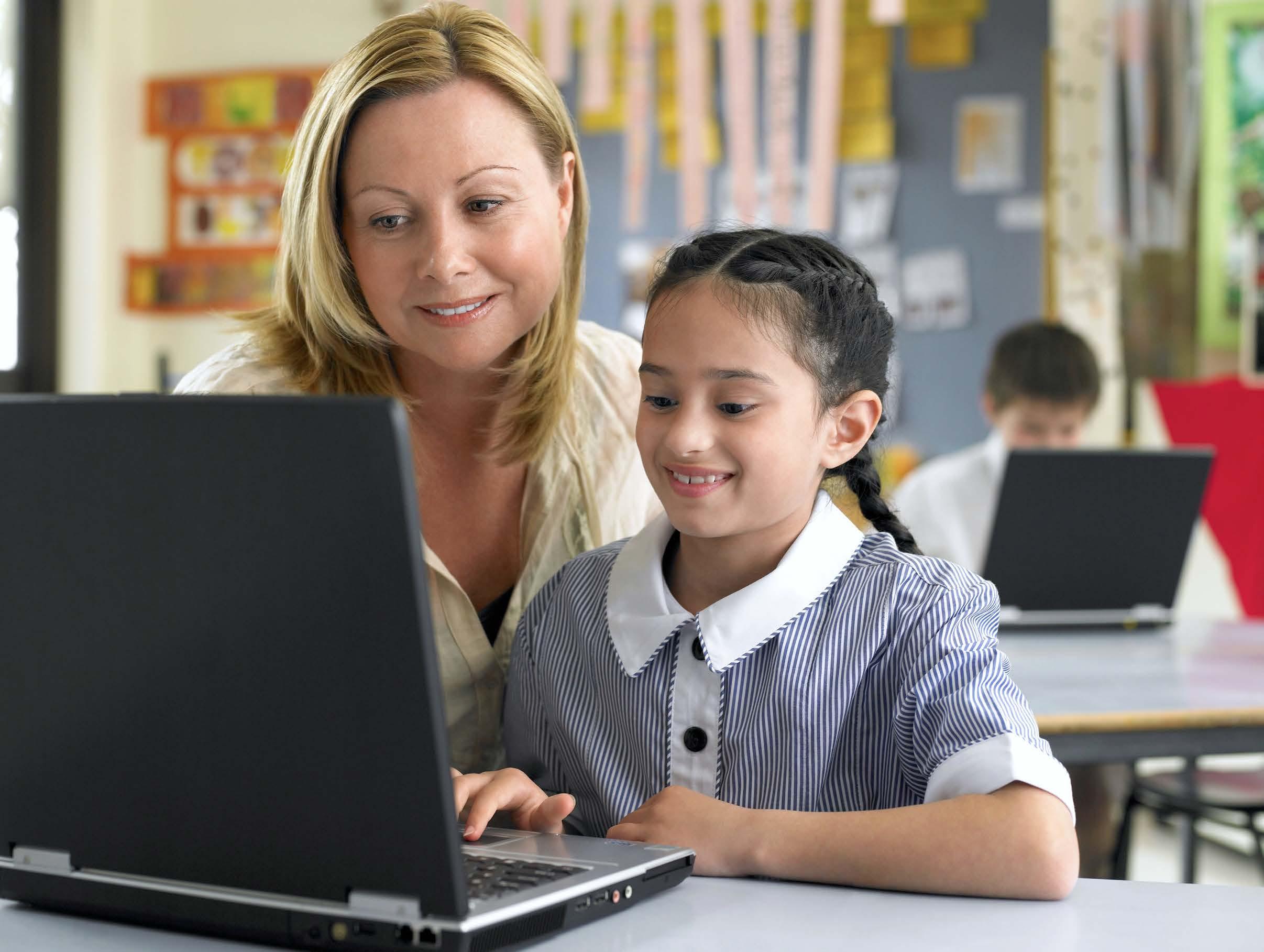
Supporting student wellbeing Student films celebrate history Emerging tech in education A content rich, comprehensive, buyer’s guide for schools. www.educationmattersmag.com.au


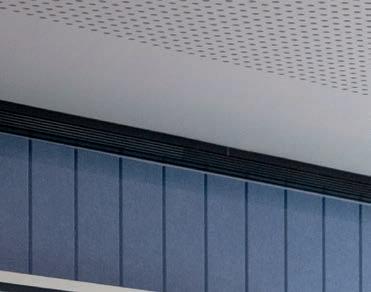
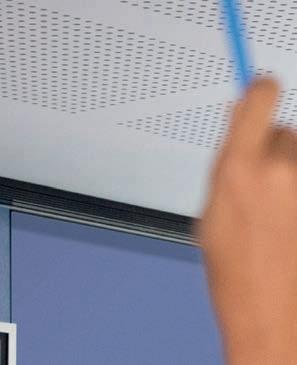





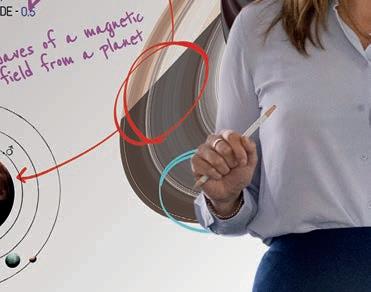


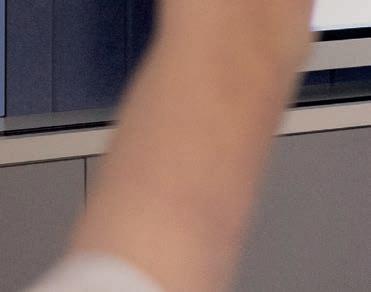










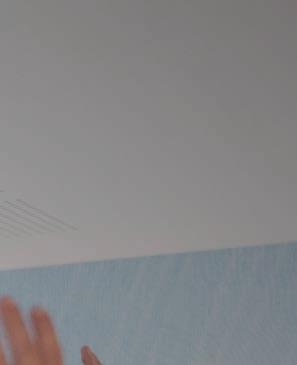


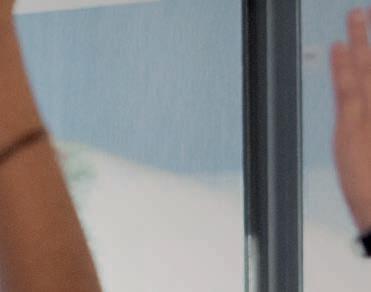

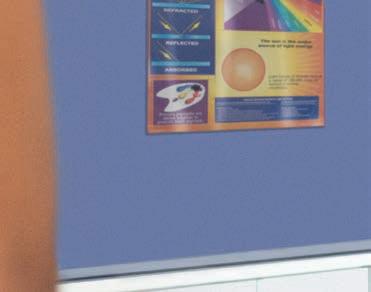




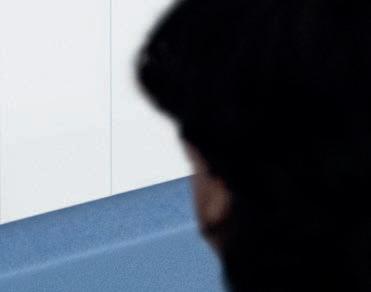
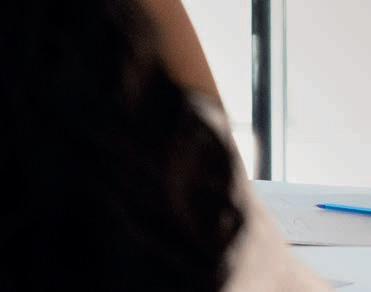


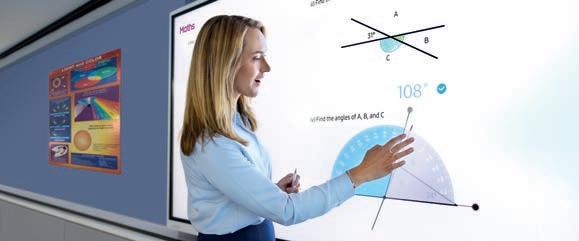
Taking on the world
Ahead of several big events in education taking place over the next few months, I’m pleased to introduce the latest issue of Education Matters – fresh off the presses, and straight to the desks of principals, teachers, and leadership teams around the country.
As it is with every busy season, our team has been fully immersed in the sights and sounds of all things education and relishing the opportunity to speak to some of the best and brightest innovators, policymakers and changemakers working in education right now.
In this issue, we celebrate the upcoming FIFA Women’s World CupTM Australia & New Zealand in our cover story and explore Football Australia’s new primary and secondary school progams on offer for the duration of the event. As the Commbank Matildas battle it out for the world title this year, schools are invited to participate in their own World Cup celebrations and gain experience playing the game.
In this month’s Principally Speaking, Allendale East School Principal Kylie Smith speaks to us about receiving the R U OK? Education Award at the 2023 Barbara Hocking Memorial Awards in recognition of the school’s outstanding student wellbeing initiatives and providing support to the most vulnerable people in the school’s rural South Australian community.
From the frontlines of primary education, former APPA President Malcolm Elliott reflects on his time as President, his career in education which he began in 1978 as a 17-year-old new graduate from teacher’s college, and looks toward the future of education.
Speaking of the future, this month’s Hot Topic explores ‘The Virtual Classroom’ and the role of emerging technologies in changing the way students and teachers work together and Professor Erica Southgate of the Unversity of Newcastle shares her research on the practicalities and implications of implementing AI and VR technologies into the classroom.
Our partners, contributors, and the education community, had no shortages of stories and updates to share in this issue. In the pages herewithin, readers are invited to explore the knowledge and expertise of the National Museum of Australia, Grok Academy, DART Learning, The Brown Collective, WillPlay, and much more – covering the full spectrum of education.
We also hear the latest news from eSafety Commissioner Julie-Inman Grant, ACARA CEO David de Carvalho, Education Services Australia CEO Andrew Smith and EREA Flexible Schools CEO Matt Hawkins – among many other Expert Contributors.
We hope our readers enjoy this issue as much as we did putting it together.
Happy reading!
Kate Felton Editor – Education Matters kate.felton@primecreative.com.au
Chief Operating Officer: Christine Clancy christine.clancy@primecreative.com.au


Managing Editor: Myles Hume myles.hume@primecreative.com.au
Editor: Kate Felton kate.felton@primecreative.com.au
Design Production Manager: Michelle Weston
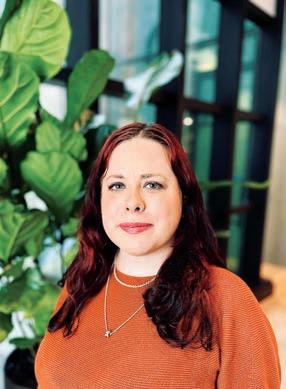
Art Director: Blake Storey
Designer: Michelle Weston
Media Bookings and Advertising: Kylie Nothrop kylie.nothrop@primecreative.com.au 0422 046 299
Client Success Manager: Glenn Delaney
Education Matters is a division of Prime Creative Media Pty. Ltd. 379 Docklands Dr, Docklands, VIC Ph: (+61 3) 9690 8766
Subscriptions
Education Matters is available by subscription from the publisher. The rights of refusal are reserved by the publisher. Ph: (+61 3) 9690 8766
E: subscriptions@primecreative.com.au
Articles
All articles submitted for publication become the property of the publisher. We reserve the right to adjust any article to conform with the magazine format.
Copyright
Education Matters is owned by Prime Creative Media Pty. Ltd. and published by John Murphy. All material in Education Matters is copyright and no part may be reproduced or copied in any form or by any means (graphic, electronic, or mechanical including information retrieval systems) without the written permission of the publisher. The Editor welcomes contributions but reserves the right to accept or reject any material. While every effort has been made to ensure the accuracy of information, Prime Creative Media will not accept responsibility for errors or omissions or for any consequenses arising from information published. The opinions of the magazine are not necessarily the opinions of, or endorsed by the publisher unless otherwise stated. All photographs of schools (including students) depicted in feature articles and advertisements throughout this magazine have been supplied to the publisher (and approved) by the contributing school. All material supplied by schools is done so with the understanding that such images will be published in Education Matters and may also appear on the our website: www.edumatters.com.au.
4 education matters primary EDITOR’S NOTE
Education Matters MagazineEducation Matters
www.educationmattersmag.com.au www.educationmattersmag.com.au/subscribe/
Will your school make history? Share a defining moment that matters to you and you could win $2,000 for your school. Open to Australian school students (K–12) ENTRIES CLOSE 15 SEPTEMBER 2023 SCAN TO FIND OUT MORE NMA.GOV.AU/HISTORY-MAKERS
contents
PRIMARY JUN-AUG 2023
REGULARS
Editor’s note 4 News 8

APPA President Malcolm Elliott bids a fond farewell 14 Malcolm Elliott reflects on his career in education, the current education system, and looks toward the future.
Principally Speaking 16
Allendale East School Principal Kylie Smith on empowering students and the community with strong wellbeing support.
Hot Topic: The virtual classroom 20 Education Matters reports on how emerging technologies are changing the way students and teachers work together.
The Last Word 48
Dr Matt Hawkins explains how flexible learning environments better serve students. Andrew Smith discusses the impact of AI-enabled technologies on Australian schools. David de Carvalho introduces ACARA’s new professional learning hub for delivering the Australian Curriculum Version 9.0.
FEATURES
22 Making history with the National Museum
The National Museum of Australia invites students to explore key moments that have shaped Australian culture.
24 Vir tual excursions equalise education
DART Learning offers 3,800 virtual excursions designed to make education more accessible to all students.
26 The chance of a lifetime
Football Australia introduces curriculum-aligned school programs ahead of FIFA Women’s World CupTM
30 A more holistic view of learning
Dr Vitomir Kovanovic explains how student learner profiles highlight students’ skills and capabilities.
32 A primary school STEM program for all
According to the University of Canberra, the first three years of primary school are critical for STEM learning.
35 Creating balanced classes
Improving the class creation process by streamlining the tools teachers need to build better class lists.
36 Suppor ting childhood development with play
The role that play has in developing a positive sense of physical and mental wellbeing in children.
38 School leaders and the law
The Brown Collective equips school leadership with the skills to respond to issues of a legal nature.
40
Reducing occupational violence in education
New ways of thinking about restrictive practices and occupational violence in education.
42 Explore EduTECH 2023
A comprehensive program guide to EduTECH 2023’s conferences, speakers and presentation topics.
44 Cybersecurity unplugged
Grok Academy introduces its new cybersecurity and digital literacy resources for primary school students.
46 Teaching safe online habits to primary students
eSafety introduces The Mighty Heroes – an online safety resource aimed at teaching lower primary students.
6 education matters primary
One searchable website with over 3800 virtual excursions from 150 content providers.









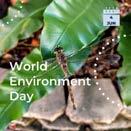
















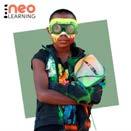






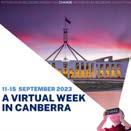
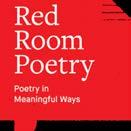




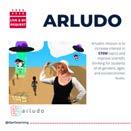
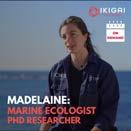
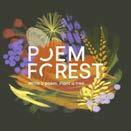
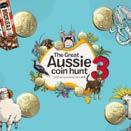

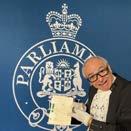


DART Learning is a FREE service for teachers, parents and students to find curriculum enriching virtual excursions offered by museums, galleries, science centres, zoos, educational institutes and more.


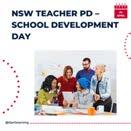


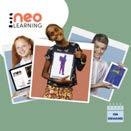










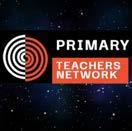

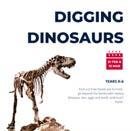




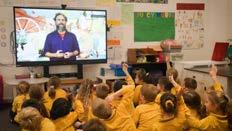












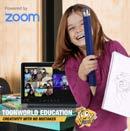


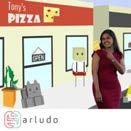



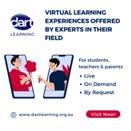
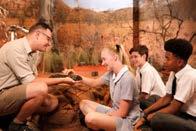
DART Advert 2023.V3.0.indd 1 23/05/2023 2:08:19 PM
Education Minister: Australian education urgently needs practical reform
Updated from April this year, the Organisation for Economic Co-operation and Development (OECD) Education Policy Outlook in Australia provides a concise analysis of the current Australian education system, compared to international education systems, including ongoing policy and reform efforts.
The revised 2023 report confirmed ongoing issues with teacher shortages, equity, and a significant problem with bullying and poor behaviour in Australian schools.

Following a formal review of document, Australia’s Federal Minister of Education, Mr Jason Clare, released a statement expressing the need for urgent action from the federal government to achieve more practical reform efforts across Australia’s entire education system.
“While the report shows we have a good education system by international standards, we know that it should be a lot better and a lot fairer,” Mr Clare said.
“The report provides a valuable international perspective and will inform future reform efforts, including the review into the next National School Reform Agreement (NSRA) led by Dr Lisa O’Brien.”
According to Mr Clare, the OECD report shares common themes with the Productivity Commission’s final report on the NSRA, which he says “was scathing in its criticism of the current agreement. The current school agreement lacks key targets and, most importantly, the real practical reforms that we need to tie future funding to.”

“The next agreement will fix this. We will ensure future funding is tied to reforms that will make a real, practical difference,” he said.
In an interview with ABC Radio’s David Lipson, Mr Clare further addressed some of the key challenges identified in the report as prevalent the Australian education system, compared to the OECD’s international standards, including a reported rate of bullying that is three times the OECD international average.
When asked about the cause of such a high rate of bullying the country, Mr Clare said it is difficult to pinpoint.
“It’s not just in the playground, it’s online. Students can escape physical bullying in the playground when the school bell rings, but that online bullying continues after they leave,” he said.
“I think this is part of the fallout in the aftermath of the pandemic. Teachers will tell you that they’re still seeing children struggle with their mental health following two years of on and off lockdowns.”
He further addressed how the problem of bullying and behavioural issues in the classroom affects teachers and principals, prompting many to leave the profession altogether.
“Parents want their children to be safe at school, but teachers and principals have a right to expect that they’ll feel safe at school as well,” Mr Clare said. “I think you can draw a line between bullying and why a lot of teachers are leaving the profession, feeling worn out and burnt out.”
“A lot of teachers will tell you that when they leave university and jump into the classroom for the first time, they don’t feel prepared to deal with some of
these challenges.”
Despite the country’s National Teacher Workforce Action Plan recently coming into effect, the Department of Education has projected a shortage of 4,100 secondary school teachers within the next two years.
“We’ve seen a big drop over the last ten years in the number of people going to university to study teaching, about a 16 percent drop,” said Mr Clare. “To help turn that around, we’re investing in the budget, and in scholarships, to encourage more students to become teachers.”
“We’ve got to improve the way we teach teachers at university. We have to make sure that people are better prepared for the classroom. Believe it or not, about 50 percent of teachers quit the profession in the first five years, and there are things that we can do to tackle that problem.”
Mr Clare further commented on the disparity in academic performance between students from affluent inner-city communities and Indigenous students or those with socio-economic disadvantages like living in a remote outback community.
“If you’re a young person from a poor family or from the bush or an Indigenous Australian, you’re three times more likely to fall behind at school,” said Mr Clare.
“The fact is, you’re less likely to go to preschool, you’re more likely to fall behind in primary school and you’re less likely to finish high school, let alone go on to university.”
“We’ve got a great education system in Australia, amongst the best in the world, but not for everyone. There are children here who are missing out and so the work I’m doing this year, whether it’s in early education or school education or in higher education, is about what do we do here that fixes this.”
The OECD is an international organisation that works together with governments and policy makers to coalesce education data into an ongoing comparative analysis that examines country-specific work and seeks to establish international standards for education policy and reform. EM
NATIONAL EDUCATION NEWS 8 education matters primary
The most recent OECD Education Policy Outlook in Australia provides a concise analysis of policy and reform efforts in the Australian education system, compared to international systems.
Schools hold key to supporting diverse learners
The greatest wellbeing challenge students are currently facing is increasing levels of anxiety and decreasing levels of engagement. These challenges are amplified for students with diverse needs, such as those with ADHD, autism, or dyslexia, as the way that they engage with learning is different.
Meanwhile, teachers are grappling with high levels of burnout and stress due to increasing workloads and a decrease in resourcing due to staff shortages.
However, Awards Victoria CEO, Mr Stephen Mason, says that schools could hold the key to resolving these challenges. In addition to explicitly teaching wellbeing skills through formal curriculums and programs, schools have access to other useful tools through which they can enhance the wellbeing of all students and teachers.
“We believe schools have a unique ability to affect a sense of belonging, accomplishment, meaning and purpose for students and for teachers, and to increase the quality and strength of their relationships,” said Mr Mason.
“This can be done through cultivating a school culture that fosters these domains and through the delivery of a variety of non-formal education, programs and activities at the school.”
A growing need to foster wellbeing
As the field of education continues to evolve, wellbeing has become an increasingly important priority for schools. Mr Mason pointed to a growing body of research that highlights the connection between emotional wellbeing and learning, as well as the concerning trend of declining wellbeing (and a growing prevalence of anxiety) among young people.
“Unfortunately, this trend has only been exacerbated by the COVID-19 pandemic, which has impacted various aspects of wellbeing, particularly in the areas of mental health and belonging. The shift to remote learning disrupted schooling and, as a result, affected engagement, relationships, and other crucial domains of wellbeing that schools are well-equipped to address,” he said.
“Schools play a critical role in supporting wellbeing, not only because it’s linked to learning outcomes, but also because young people spend a significant amount of their time at school,” he furthered.
“In addition, schools and teachers are uniquely positioned to teach and develop wellbeing literacy.”
Giving teachers better tools to help diverse learners
Mr Mason said he believes that education systems will evolve, and make way for a more integrated and inclusive approach that can best deliver education to diverse learners. However, teachers will need additional support and the extra time required, to implement this.
“All schools, including specialist schools, should have extra support and tools to deliver education to diverse learners in a way that meets their needs. We would love to see the research, theory and practice on how to best engage diverse learners become more accessible so that more educators had access
to this knowledge,” said Mr Mason.

He noted that all teachers want to be effective in their role, and that engagement and learning sit on a wide spectrum, schools and teachers need to adapt to a variety of needs to ensure all students get the most out of their education.
“Schools can better include diverse learners by providing teachers with professional development on the topic; through careful consideration and alignment of the types of programs and activities offered through formal and non-formal education; and by utilising placemaking theory to make their spaces more inclusive,” Mr Mason explained.
Change is happening
The good news is that change is afoot, with government initiatives such as FISO already underway. Mr Mason said that he expects that wellbeing will increasingly become a foundational focus for schools.
“It won’t just be taught but it will be infused into all aspects of a school – in strategy, in culture, in programs and activities, and in the values of a school,” he said.
“It won’t just be something that sits in a corner, managed, and delivered by one person or a department. It will be a part of every teacher’s pedagogy, each classroom and the responsibility of the school community as a whole.”
He concluded that schools must take a proactive approach to promoting wellbeing in young people, and stated that by doing so, “educators can ensure that students have the skills and resources necessary to thrive both personally and academically.”
Connect with Awards Victoria at the National Education Summit
Mr Mason will be at the National Education Summit taking place in June in Melbourne and will present the following sessions:
• On 16 June he will explain how to build student belonging using nonformal education theory, in a presentation at the Wellbeing for Future Focused Schools Conference.
• On 17 June he will discuss non-formal learning empowering youth in specialist schools, at the Diverse Learners Symposium. EM
WHEN AND WHERE:
Melbourne: Fri 16 and Sat 17 Jun 2023, Melbourne Convention Centre Brisbane: Fri 4 and Sat 5 Aug 2023, Brisbane Convention & Exhibition Centre Website: https://nationaleducationsummit.com.au/
9 education matters primary
Federal budget supports young people in Central Australia
In a joint statement released on 9 May, Federal Minister for Education
Mr Jason Clare announced that the Australian Government and Northern Territory Government are working together to deliver the next stage of the $250 million landmark plan for a Better, Safer Future for Central Australia to improve community safety and provide more opportunities for young people.
According to the statement, the 2023-24 Federal Budget delivers the next stage of investments that will strengthen local communities across Central Australia, including Alice Springs and “better outcomes for children and young people will be a core focus of this investment.”
The announcement outlined the next stage of the plan for a Better, Safer Future for Central Australia, as follows:
•
$50 million for community and regional infrastructure
The Australian Government will allocate $50 million for community and regional infrastructure projects. We will listen to Central Australian communities and work with them to identify priority projects.
•
$40.4 million for on-country learning to improve school engagement
The Australian Government will provide $40.4 million over two years from 2023-24 to schools in Central Australia to improve school attendance and education outcomes. This measure will prioritise community engagement and locally driven responses in partnership with local community organisations.
Schools will work with their local communities to develop tailored solutions to better engage children and young people in school and provide them with the wrap-around support they need to succeed. Education is a driver of opportunity and a critical pathway to further education and employment.
• $23.5 million for improving First Nations health outcomes
The Australian Government will invest $23.5 million to support the health of Aboriginal and Torres Strait Islander children, young people and their families in Alice Springs and surrounding communities. This includes $18.4 million to the Central Australian Aboriginal Congress (Congress) to expand their existing Children and Youth Assessment and Treatment Services (CYATS).
The funding to expand CYATS aims to meet current demand and increase the availability of early detection and intervention services for neurodevelopmental conditions, including Foetal Alcohol Spectrum Disorder (FASD).
Additionally, there will be $5 million provided to Congress in 2022-23 to support the development of Health Hub in Alice Springs – combining the four current health services into one single centre.
Congress is the largest Aboriginal Community Controlled Health Service in the Northern Territory and has a long history providing health services across Central Australia. Expansion of CYATS allows for greater capacity for early detection and treatment of those neurodevelopmental conditions and
ensures families are connected to a network of support services.

Additionally, increased funding will allow Congress to better respond to the region’s disproportionally high numbers of developmentally vulnerable Aboriginal children, including those with neurodevelopmental disorders and young people in the justice system.
• $10 million to enhance digital connectivity
The Australian Government has bolstered its commitment to narrowing the digital divide for First Nations Australians, with an additional $10 million in funding under the Regional Connectivity Program (RCP).
On 20 April, the Hon Michelle Rowland MP, Minister for Communications announced the additional $10 million in funding to enhance digital connectivity for First Nations Australians. This funding has been added to the latest round of the Regional Connectivity Program (RCP) and is dedicated to delivering solutions that improve mobile phone coverage and internet connections in Central Australia.
The application period for the RCP was also extended by six weeks to Wednesday 12 July 2023, providing more time for applicants to develop proposals that support First Nations communities and to ensure substantial consultation with stakeholders, including local communities and councils.
• $10 million for justice reinvestment
The Australian Government will allocate $10 million for justice reinvestment initiatives in Central Australia. Justice reinvestment allows First Nations communities to identify the best ways to prevent and reduce contact with the criminal justice system, and empowers those communities to make decisions about the policies, programs and decisions that affect their lives.
This funding will be pooled into the National Justice Reinvestment Program, which the Government committed to in the October 2022-23 Budget. Communities in Central Australia will be able to apply for justice reinvestment funding when the National Justice Reinvestment Program opens for applications from mid-2023.
• $9.2 million for strengthening community safety
The Australian Government will invest $9.2 million to strengthen community safety in Central Australia. This funding will support increased engagement and diversion of ‘at-risk’ First Nations youth in Central Australia. Funding will be targeted towards delivering youth services to build job readiness, improve access to mental health, drug and alcohol diversion, address drivers of gender-based violence and enhance cultural and community connections.
• $3.9 million for a Youth Services Action Plan
$3.9 million will be provided over four years to develop a Youth Services Action Plan for Central Australia, and to support the provision of cultural camps for young people at risk to keep them engaged, connected to their culture and communities and to prevent emerging issues from escalating.
In addition to the Youth Plan, the Australian Government will support a
NATIONAL EDUCATION NEWS 10 education matters primary
series of on-country and youth diversion activities for children aged 8-12 years deemed at risk by law enforcement, child protection agencies, service providers or schools. This may include camps, day trips and other activities that enable children to be connected to country.

• $1.2 million for up to 5 new Junior Ranger sites in Central Australia
The forthcoming junior ranger national open competitive grant round will prioritise up to five new junior ranger sites in Central Australia. Junior ranger activities focus on the intergenerational transmission of First Nations knowledge and customary practice. Projects are integrated with the school curriculum and can also support completion of VET qualifications. Activities are place-based and community-led, with projects designed and delivered by local organisations to meet the needs and aspirations of local communities.
• $7.5 million for effective governance to ensure successful delivery


Strong governance arrangements will be put in place to drive coordination and delivery of the Australian Government’s commitments to Central Australia. This includes the establishment of an Aboriginal Leadership Group. Supported by the Australian Government and the Office of the Central Australian Regional Controller, the Leadership Group will work alongside existing community leadership and governance arrangements across the region to provide advice on the next steps for implementing the Better, Safer Future for Central Australia Plan.
“Local community feedback, including from local government, has been a key part of the process for identifying priorities for the plan for a Better, Safer Future for Central Australia,” said the statement. “We will continue to work closely with communities, and in partnership with the Northern Territory Government, to deliver real outcomes on the ground.”
Looking ahead
The Education Minister continues to reaffirm the need for urgent action from the federal government to achieve more practical reform efforts across Australia’s entire education system. Since he was appointed in 2022, he has maintained a focus on initiatives such as an official review of the National School Reform Agreement, Labor’s Cheaper Childcare Plan, and the National Teacher Workforce Action Plan which includes an estimated $328 million in funding. EM
The 2023-2024 Federal Budget outlined the next stage of the plan for a ‘Better, Safer, Future in Central Australia.
Your home for Digital Technologies education. Grok Academy offers curriculum-aligned online courses, unplugged activities, lesson plans, teacher notes, and more, to help you teach digital technologies with ease.
F-4 Privacy resources


Teach your students the fundamentals of keeping their information safe online, choosing good passwords and usernames and not sharing personal information publicly.
This content is covered by a selection of unplugged resources including card games, problem solving activities and lesson plans. It also includes letters you can send home to parents to help them understand the topic.

These two courses cover the fundamentals of ordering and if-statements using block-based programming, to help students understand the concepts without needing to worry too much about spelling, typing and syntax.
 Monster Maker 1 and 2
Monster Maker 1 and 2
is free for all
Sign up today: grokacademy.org
Safe Password Booklet F-2 NAME: GRADE: www.grokacademy.org Supported by: Safe Passwords Years 3-4 We are writing to inform you about your child’s recent lesson on the importance of creating safe and secure password As your child becomes more familiar with using technology, it is essential for them to understand how to create strong passwords What is strong password? Your child learnt the following tips for creating strong password: Make long (more than characters) Use some capital letters, numbers, and symbols Use combination of random words What can you do to help your child create a strong password? Parents can help their create strong password by explaining the importance of online security, working with hem to create strong password, and monitoring their online activities to ensure they are using safe online practices. You can also keep the conversation going. Here are some suggestions: Ask your child to explain why using name or pet’s name can make password unsafe Ask your child to explain why adding capital letters, numbers and symbols can help to make a password safe shared with anyone, including friends and family members. We hope that you find this information helpful in reinforcing your child's learning about safe and secure passwords. you have any questions or concerns, please do not hesitate to contact us. Sincerely, [Your Name] [School Name] content under Commons Attribution International license. Developed by Grok Limited. grokacademy.org help@grokacademy.org ��������������������������������� ���������������������������������������������������������������������������������������������������������� ��������������������������������������������������������������������������������������������������������� �������������������������������������������������������������������������������� – �������������������������� ��� – ��������������������� –������������������������������������������������������������������������������������������������� ������������������������������������������������������������������������������������������������������������� ����������������������������������������������������������������������������������������������������� ����������������������������������������������� ��������������������������������������������������� ����������������������������������������������� ��������������������������������������������������������������� ��������������������������������������������������������������������������������� Lola needs a profile picture for her online game. Game settings personal information Controller settings Change password Done Security settings Click to profile pic ? Your profile picture Lola Cancel Done Lola used her recent school photo for her profile on her online game. Created by Grok Academy Limited www.grokacademy.org Your profile picture Lola Cancel Done Lola used an avatar for her profile on her online game. B A Front Lots of friend requests keep popping up. What should Harry do? + Friend request settings + Anyone Who can send you friend requests? Private Harry went to talk to his mum and together they turned the game setting to private. ADD ADD ADD ADD ADD ADD + Stranger22: Can we be friends? Newguy111: Add me as your friend! + ADD DELETE ADD DELETE + Friend requests Created by Grok Academy Limited www.grokacademy.org Harry added all his new friends! He had not met them in person but liked having so many friends to play his online game. B A Front Supported by: Digital Detective Cards (Years F-2)
Foundation to Year 4 Grok Academy
Australian schools
Years 5-6

NCSS Challenge

This fun and friendly 5-week competition teaches students to code as they go along. It includes interactive notes, auto marking and live online tutoring (from real people) to help your students reply understand the content.



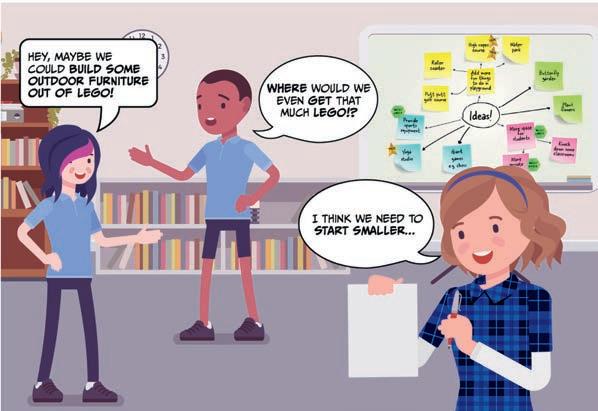
Teaching Resources
Design Thinking Mix-In
Teach your students techniques and processes for solving problems. This resource includes an online course, teacher workbook, lesson plans and unplugged activities. It introduces key design thinking concepts including ideation, failing fast, prototyping, user testing and evaluation, and iteration. It also highlights attitudes students need to be great design thinkers, such as empathy, open-mindedness, and resilience to failure.
Teacher notes and solutions
All our online courses come with teacher notes and solutions which highlight common mistakes and misunderstandings students make.
Unpacking the Curriculum
Created by the writes of the Australian Curriculum: Digital Technologies themselves, this resource breaks down the curriculum into easy to understand chunks by concept and year level.
Free for all Australian schools: Thanks to the support of our sponsors Grok Academy is free for all Australian schools. Learn more: grokacademy.org/partners
2.1.3. Writing a while loop A while loop keeps repeating while the condition is True create an infinite loop we give a while loop the condition True by typing: Don't forget the colon! Put the code to repeat inside the loop by indenting it with spaces: The last 4 statements are indented, so they are all repeated: Indentation We indent by putting spaces at the beginning of the line. Indentation tells Python that the code is inside the loop Make sure you use the same number of spaces for indenting each line inside the loop. Is value True? Start Show big heart Show heart End Sleep for 0.5 Sleep for 0.5 yes while from microbit import * while True display.show(Image.HEART) sleep(500) display.show(Image.HEART_SMALL) sleep(500) Our first program is turning on light light emitting diode or LED). The micro:bit has 25 LEDs, so let's use lots of them! Click run in the example below: Congratulations, you just programmed a micro:bit! 1.1.3. Importing microbit Let's ha e a closer look at the first line (called a statement microbit is a Python module (a library of useful code) that we use to control the BBC micro:bit. The (called an asterisk means everything so it imports all of the code from the microbit module. This statement must be at the top of e ery micro:bit program. We'll include for you, but don't delete it, or your programs won't work! micro:bit vs. microbit The BBC micro:bit is the device, and microbit is the Python module. Careful of the colon! 1.1.4. Using the microbit module Everything we use in the second statement is imported from the module: display.show is method (like command) of the display object, which controls the micro:bit's display Image.HAPPY is a built-in image provided by the Image (run) the display.show method by putting brackets after it. The image we want to display goes inside the brackets: from microbit import * display.show(Image.HAPPY) from microbit import * import display.show(Image.HAPPY) 1 DISPLAYING IMAGES AND TEXT 1.1. Getting started 1.1.1. BBC micro:bit The BBC micro:bit (https://www.microbit.co.uk/) is a tiny computer that runs the Python (https://microbitmicropython.readthedocs.io) programming language. The micro:bit has: 5 x 5 display of LEDs (light emitting diodes) two buttons (A and B) an accelerometer (to know which way is up) a magnetometer (like a compass) a temperature sensor Bluetooth (to talk to other micro:bits and phones) pins (gold pads along the bottom) to connect to other devices like screens, motors, buttons, lights, robots and more! If you don't have a real micro:bit... You can still do this course. It includes a full micro:bit simulator, so you'll be able to do everything you'd do on a real micro:bit! 1.1.2. Hello, micro:bit! Let's jump right in with program...
in the consultation and implementation of Tasmania’s Education Act. In 2021 he was a member of the expert panel for the Quality Initial Teacher Education Review.
APPA President Malcolm Elliott bids a fond farewell
FOLLOWING
From humble beginnings, Malcolm Elliott began his career in education in 1978, as a 17-year-old new graduate from teacher’s college, with his first teaching position at Lilydale District School, just outside Launceston, Tasmania. Now, several months into his retirement, Mr Elliott recalls his early teaching days fondly.
“I turned 18 in my first few months of my teacher training. When I started there, our school had one telephone line. Then in 1984, we got a photocopier, which leapfrogged us into the forefront of technology at the time,” he recalls. “For a long time, that first role always felt like just yesterday to me. But now as I approach my mid-60s, it has started to feel like a long time.”
“One of the greatest gifts of working in education for me has been keeping abreast of the latest trends in technology, science, arts, and culture. Education often rests on the forefront of social change,” he says. “And although the pace of that change has always felt relatively consistent, the role and context of education in our society is vastly different now
Mr Elliott was first elected as President of the Australian Primary Principals Association (APPA) in January 2019, and was since reelected twice without any opposition by the national, state and territory sector principals’ associations, that make up the National Advisory Council (NAC) of the APPA.

Over the course of his career, he has been an active voice in education policy and reform at the state and federal level and a steadfast advocate for improved education standards and teacher’s workplace rights; more fine-tuned curriculum and assessment standards; and an all-around, better, fairer education system.
As President, he played an integral role in the collective effort by the APPA and Australian primary schools to continue teaching year-level curriculum to children during the COVID-19 pandemic.
“The pandemic was a very challenging time for the APPA and Australian schools to ply our trade. As a national organisation, we represent primary school leadership and teachers from all around our vast nation, and our experience during the pandemic exemplified the difficulties that we face in this country with equity and diversity in education, as well as the isolation of distance in some areas of the country,” he says.
For nearly two years, the APPA was unable to gather as a group, which meant that a lot of a lot was dependent on the goodwill and sense of connection that people felt in their profession, as well as a joint sense of purpose around the welfare of school.
“One of the things that stood out for me and during this time was the improvement that we saw in the way that our society and communities respond to educational leaders
14 education matters primary APPA COLUMN // MALCOLM ELLIOTT
HIS RECENT RETIREMENT, MR MALCOLM ELLIOTT REFLECTS ON HIS TIME AS PRESIDENT OF THE AUSTRALIAN PRIMARY PRINCIPALS ASSOCIATION AND LOOKS TOWARD THE FUTURE OF EDUCATION IN AUSTRALIA.
and teachers during lockdown when the pressure was on and it became a somewhat public performance of people’s skills and capabilities,” he says.
“For a while, it looked like the corner may have been turned in terms of how teachers were seen in our community and there was a real boost in morale, even though people were working harder than ever before. But then there’s the paradox of what we’re seeing now with teacher burnout. There’s so much more pressure that our systems have placed at the feet of our school leaders and our teachers, and expectations from our communities, without the appropriate policies, funding, and workforce in place to support those expectations.”
In the face of these challenges however, Mr Elliott emphasises a continued sense of moral and purpose amongst principals, and teachers about the work that’s being done, despite “the burden of measurement” in the education sector, which he says is becoming “more and more narrowly confined.
“Teachers don’t have to be astronomically well paid, but they must be well paid. They do a very demanding job. In the right conditions, teaching is a wonderful profession to be part of, and richly rewarding. But in the wrong conditions, it can become an undervalued, misunderstood job where teachers are treated as something much less than what they have to offer,” he says.
To restore the balance for the profession, Mr Elliot says Australian policymakers need to restore a focus on the four purposes of education:
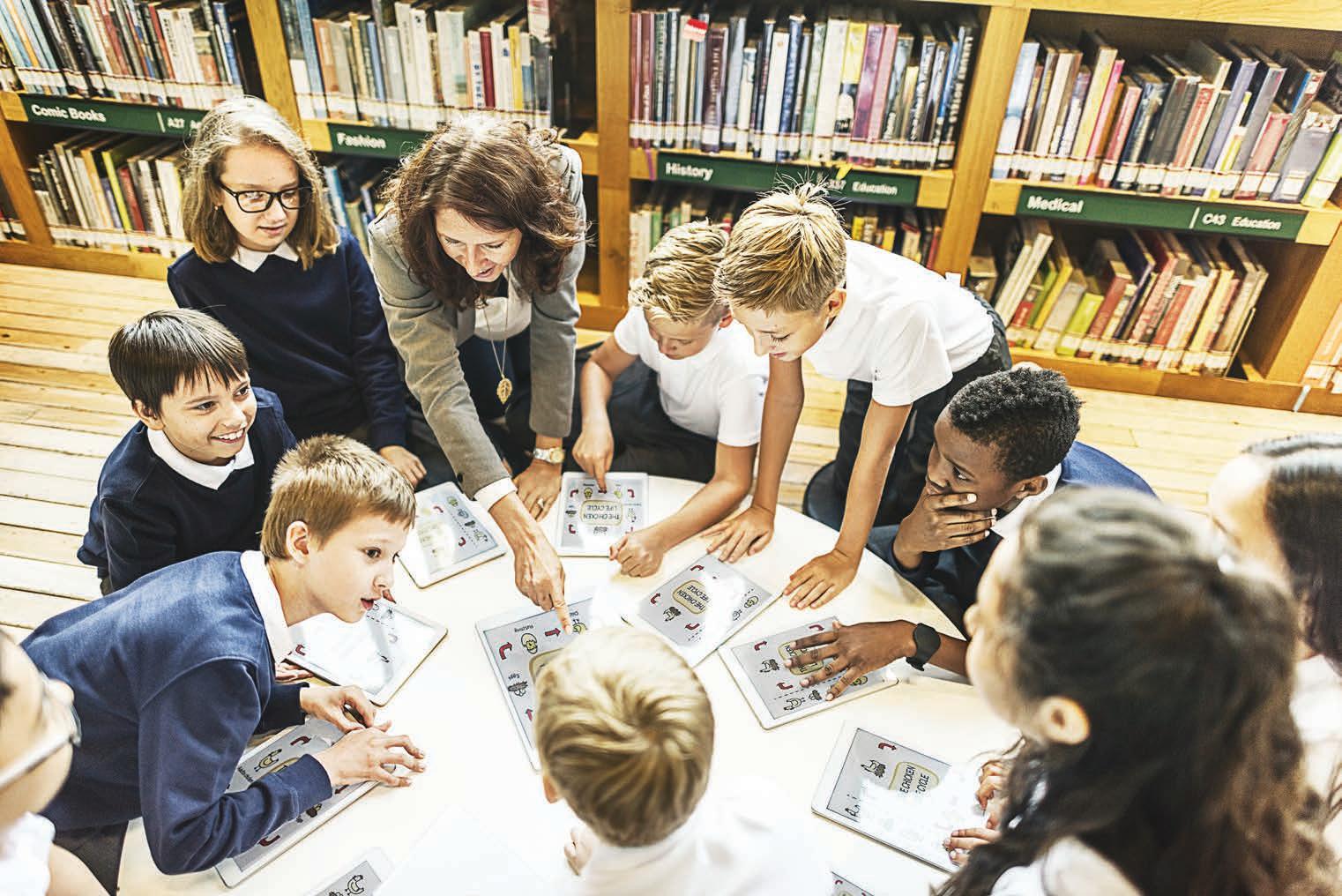
1. Maintaining and strengthening our democracy
2. Maintaining and strengthening our economy
3. Maintaining and strengthening our society
4. Caring for individual children and giving everyone the very best opportunity in life
“To reverse the declining numbers of people wanting to lead schools and pursue teaching as a profession, there will need to be a shift away from datasets, numbers, dollars, and cents, and back to an emphasis on the humanity of teaching,” he says.
“There needs to be more of an emphasis on the importance of having a well-trained, valued, professional group of teachers in schools – as well as the recognition of the role that education plays in our homes, our families, and the raising of our children.”
During his time as President, Mr Elliott continued to demonstrate the importance of these relationships and building trust between systems and schools, and he applied this approach when working with many key stakeholders across the national education sector, including successive Ministers of Education and the Commonwealth Department of Education.
Speaking on behalf of the APPA, Deputy President, Ms Sally Ruston AM, comments: “We are saddened by the resignation of Mr Elliott after nearly four and half years of distinguished
service as President of our association and an entire career dedicated to leading in schools and educating students.”
Whilst thanking Mr Elliott for his dedication to APPA and his contribution to education, Ms Ruston states that the APPA Board and National Advisory Council will remain committed to continuing APPA’s work and partnering with other peak national education bodies and principal associations to continue building on the excellent support, leadership and advocacy and the strong foundation and legacy upheld by Mr Elliott during his presidency.
When asked what the future holds, Mr Elliott says he is still figuring out what the next chapter will look like. “For me right now, it’s time to take a couple of deep breaths. I have been ‘retired’ for about eight weeks now and it’s given me the opportunity to do some things with my friends and family that I’ve put off for years and it’s been a lovely feeling,” he concludes.
Mr. Elliott continues to serve on the board of the Australian Institute of Teaching and School Leadership (AITSL) and the advisory Board of the Gonski Institute. EM
The Australian Primary Principals Association (APPA) represents over 7600 Government, Catholic and Independent primary school principals across Australia. For more information, visit: https://appa.asn.au
15 education matters primary
To restore the balance for the teaching profession, Mr Elliott says Australian policymakers need to restore a focus on the purpose of education and the value that teachers have to offer.
Strengthening student support programs in South Australia

ALLENDALE EAST SCHOOL PRINCIPAL KYLIE SMITH SPEAKS TO EDUCATION MATTERS ABOUT RECEIVING THE R U OK? EDUCATION AWARD AT THE 2023 BARBARA HOCKING MEMORIAL AWARDS IN RECOGNITION OF THE SCHOOL’S OUTSTANDING WELLBEING AND SUPPORT INITIATIVES. SHE ALSO TOUCHES ON HER CORE LEADERSHIP PRINCIPLES THAT GUIDE THE SCHOOL’S STUDENTS, STAFF, AND COMMUNITY.
CAN YOU PROVIDE AN OVERVIEW OF ALLENDALE EAST SCHOOL?
Our school caters for a wide range of students from a rural and fishing community. If one is lucky enough to find themselves in the Limestone Coast area, southeast of South Australia, and just a short drive south of the picturesque Blue Lake, one can discover the peaceful, kind, and caring hidden treasure that

pride ourselves on supporting young people in developing enterprising skills and confidence, by taking an innovative, resilient, and outward looking approach to their lives. AEAS values of Courage, Excellence and Respect are promoted by staff and reflected by students in the school culture and work ethic.
Our emphasis is on quality teaching and learning within a family atmosphere, with
of ways to develop students’ engagement in learning and building relationships.
In recent years, there has been an even larger emphasis on community relationships and how we as educators can work with our young people to lead with positive and proactive messages of hope and caring for others in a genuine and memorable way, despite current challenges in the world.
HOW DOES ALLENDALE EAST SCHOOL SUPPORT STUDENT WELLBEING?
Allendale East Area School lives, eats and breathes student wellbeing. In 2020, after staff engaged in a number of professional learning activities, we created and formalised a wellbeing team. Initially, the team consisted of the Youth Worker, our Aboriginal Community Education Officer, our Pastoral Care Worker and a Teacher. The team was also comprised of and consulted with our School Captains and Vice Captains.
Following the establishment of this team, we allocated a regular meeting time each week to dig deeper into data that had been collected through several wellbeing surveys, and parent surveys to analyse, consider, and make recommendations on how we collectively could make our school community a positive partnership between staff, students, families and community members.
What we concluded from these meetings was that the most important voices in our
16 education matters primary PRINCIPALLY SPEAKING // ALLENDALE EAST SCHOOL
Allendale East School received the R U OK? Education Award at the 2023 Barbara Hocking Memorial Awards.
school community needed to be louder. So, in 2021, we put a call out to students from Years 3-12, inviting them to apply to join the wellbeing team. After much consultation, students and staff agreed that there were three main foci that young people wanted to be more involved and proactive within a school and community perspective. These three focus areas were: The Environment, Community, and Mental Health and Wellbeing.
ALLENDALE EAST SCHOOL RECENTLY RECEIVED THE R U OK? EDUCATION AWARD AT THE 2023 BARBARA HOCKING MEMORIAL AWARDS. CAN YOU SHARE THE STORY BEHIND THIS?
For a reasonable period of time, we have worked with Tracey Wanganeen from StandBy – a South Australian support service. Tracey is a wonderful person and her superpower is to find schools that are interested and passionate about spreading the message about her services in a real and personable way. She is connected with a number of organisations that are passionate about working with schools and young people to spread the word that, despite all the barriers that can be presented to you, there is an avenue of hope, support and a future to look forward to. What I love about Tracey is that she will always seek guest speakers that are of the best quality to speak with young people.
As a school site, we always promote significant days and celebratory weeks. Our student voice team are always looking for opportunities to promote opportunities to spread the positive messages that every young person, staff member and community needs to hear, to keep them motivated to be present, a good role model and to seek help and support when things become overwhelming and too much to handle. But whilst we promote these support networks, we are acutely aware that sometimes our words are not enough, our promotions to our community can go unnoticed and our most vulnerable people may not know that we are there for them.
Part of our work as a school community is to break down the stigma of needing help, and promote the message that being vulnerable is okay, despite the challenges, and that we can provide not just one option for support, but multiple avenues to access support if needed.

17 education matters primary
Allendale East has three core focus areas for improving student wellbeing: Environment, Community, and Mental Health.
A simple ‘are you okay?’ is a good start, however, unlikely to make a significant difference. We pride ourselves at AEAS by asking more than once, following up with young people, parents and community groups to normalise the challenges and direct our young people and parents to seek professional help and support, and provide our community with the best resources available.
WHAT DID THE AWARD SIGNIFY FOR YOU PERSONALLY? HOW DID IT FEEL TO RECEIVE THE AWARD?
Receiving this award is absolutely heart-warming. We as a community have had a considerable amount of trauma for a number of years. Despite this, we appreciate that there are people looking out for us, acknowledging that we are doing a good job at providing support and opportunities and wrapping our arms around the community that we live in, work in, and love.
WHAT IS THE SCHOOL’S APPROACH TO LEVERAGING NEW TECHNOLOGIES?
We are so grateful that most of our young people and parents support us in enacting the South Australian Mobile Phone policy and the willingness of our young people choosing to abide by this policy. At our site, we have very little challenges regarding technological overuse and


abuse and for this, I am grateful for. Most of our young people are very respectful and compliant about the use of technology, and for those who struggle, we are supportive of finding ways to respectfully challenge them and their families on how to live technology free, wherever possible.
ChatGPT has not been a challenge at this point in time, however, I would attribute this to our
proactive attention to detail regarding the case management processes that we have in place for all of our Secondary students.
WHAT ARE SOME OF THE HIGHLIGHTS IN YOUR CAREER IN EDUCATION?
I was employed at AEAS in the late 1990s as a Middle School Coordinator. I absolutely loved the opportunity to work in a school that catered for students from Foundation to Year 12. I have had awesome opportunities to work with much young primary aged students, however, my preference is working with middle school students and teenagers. My time at AEAS has consolidated my thinking about my focus in education, and I love working with students between the age of 10 and 16 and feel that I am well-equipped and in sync with this age group.
HOW WOULD YOU DESCRIBE YOUR LEADERSHIP STYLE?
Firm, fair and inclusive. There are always two sides of every story. I think that I listen, listen and then listen again so that I can make an appropriate assessment of any situation. I realise that many people and parents have an opinion about how everything is decided on and how it pans out. My experience has always been that 99 percent of the
18 education matters primary PRINCIPALLY SPEAKING // ALLENDALE EAST SCHOOL
Principal Kylie Smith and Allendale East 2023 School Captains – (left to right) Kylie Smith, Maddison Gavin, Ava Gollan-Grosvenor, Merrick Miller.
Allendale East has enacted the South Australian Mobile Phone policy to encourage students to live technology-free, wherever possible.
time, most young people, parents and teachers find that we make decisions in the best interest of the young people at all times. I work extremely hard to advocate for the best conditions for learning in life for every child at our school, and beyond, if students should relocate. Every child that attends our school are on our ‘destination data journey radar’ and we want the best educational outcome for them.
WHAT LEADERSHIP STRATEGIES HAVE YOU ADOPTED IN YOUR TIME AS A PRINCIPAL?
A case management approach. I am always interested in every young person that attends our site. There are so many people that have opinions and ideas about young people that can get in the way of how a young person progresses through school. I pride myself and my leadership team on looking for the best, despite any shortcomings. I feel that one of my strengths is finding the strength and honesty in my students, staff, and families to

determine the best learning conditions that will provide an opportunity for children to thrive.
WHAT TRAITS MAKE FOR AN EFFECTIVE AND SUCCESSFUL LEADER IN EDUCATION TODAY?
Be approachable, thoughtful, understanding, firm, fair, and educated about changes that occur in the world and be okay with making a mistake. Being a good leader is really challenging. To be agile, adaptable, respectful, approachable, kind, fun, and calm all at once, can be a tough gig. Most of the time it is okay, but every now and then I do make mistakes, and when I do, I have some stern words with myself.
WHAT ARE YOUR THOUGHTS ON SOME OF THE CHALLENGES THAT MODERN PRINCIPALS FACE IN THE CURRENT EDUCATION CLIMATE?
My advice to Principals is ‘be kind to yourself’ and find self-management opportunities to keep safe, calm, respectful and upskilled. Take time to network with other Principals and do not be afraid to reach
out to them, or line managers. There are so many experienced people that can provide help and support, if one is willing to reach out. Also, it is okay to be not okay as a leader. If someone’s network is not wide enough, I would encourage them to search wider, reach out further, there is always someone out there that can help. My advice to both educators and students is that the best advice isn’t always the advice that comes from the first person that offers help and support. The best advice and help might come from the 4th or 5th contact. Keep trying.
WHAT ADVICE WOULD YOU HAVING FOR TEACHERS WHO ASPIRE TO BECOME PRINCIPALS SOME DAY?
Be prepared to work very hard, enjoy what you are passionate about, and don’t second guess every decision you make. Principals usually want the very best for the young people that they are responsible for, and it’s okay to share this intention with the wider community. EM
19 education matters primary
Working with the South Australian support service StandBy, Allendale East students have been hosting school and community events to promote positive messages of support to community members.
Leaps and bounds
Advancement of modern technology has had a profound impact on the way society operates and changed the way that people access information and learn about the world around them. In many ways, the limits of what is possible for society have exceeded human capabilities and outpaced daily life, which has changed the way that people value their time, prioritise their experiences, and access services.
Above all else though, technology has changed the way that people communicate with each other. The rise of digitalisation and the rapid advancement of technology has introduced new modes of communication, from which more flexible, creative, collaborative ways of sharing and exchanging information have emerged. In the education sector, these emerging technologies have presented students and teachers with similarly new opportunities to ‘reinvent the wheel’ and make learning
more engaging, accessible, interactive, and personalised experience for pursuing academic interests.
Moreover, the advent of a diverse range of education-focussed technologies centred around the idea of ‘the virtual classroom,’ such as e-learning platforms that present learning materials in the form of smartboards, downloads, videos, virtual messaging and virtual reality, or online classroom environments have allowed students and teachers to streamline the exchange of ideas, course content, and assignments while working remotely, and facilitated more channels of communication between them.
According to Dr Erica Southgate, Professor of Emerging Tech for Education Research at the University of Newcastle, the best approach
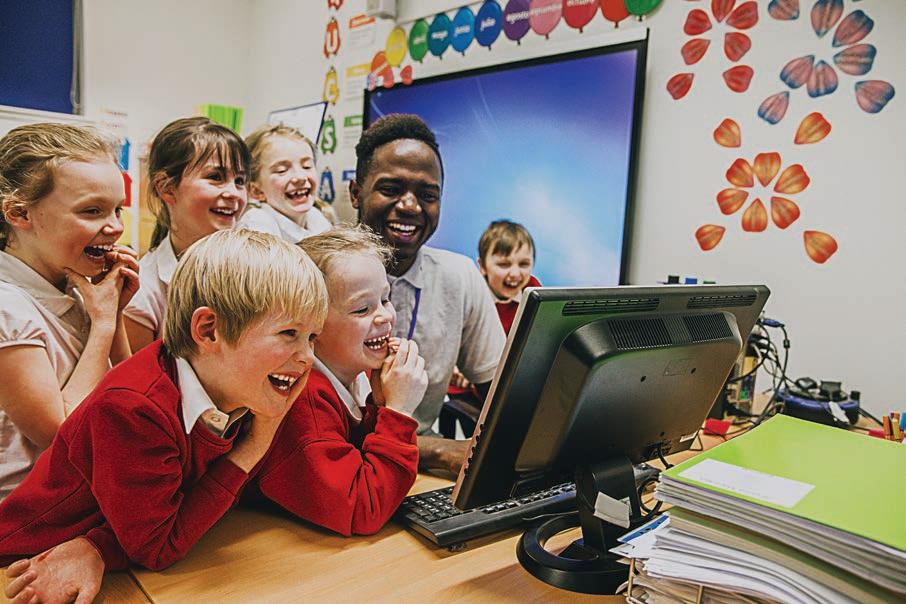
same way, one would embrace something in the natural world that has specific affordances and can promote deeper exploration and creative methods of engaging with the world in a more authentic way.
“In nature, a stick can be a learning tool that provides an individual with an opportunity to explore the world by themselves, and with others. And much like technology, it also has affordances, or rather specific properties, that can be leveraged to allow for new understandings to be developed,” says Dr Southgate. By this line of thinking, any learning tool can provide properties to help students imaginatively tell a learning story beyond the self, she explains, and acceptance that learning tools are contextual and open to interpretation should seamlessly be a part of a shared learning culture as a society, whether it is applied in the classroom, or beyond.
“Children and young people understand the concept that learning tools in the digital world can be leveraged for individual fun and sharing content with a connection to something greater than themselves. Whether that be in the context of a multi-player game or the creation and sharing of a TikTok video. This sense of purposeful and positive connection with the world is truly what the best digital learning tools provide,” she says.
In addition to teaching at the tertiary level, Dr Southgate is also the Founder and Lead Researcher of the VR School Study, which is the first of its kind, and longest running investigation into the use of virtual reality in primary and secondary schools, internationally. In her research, Dr Southgate has investigated
HOT TOPIC // THE VIRTUAL CLASSROOM 20
IN THE AGE OF BIG DATA, ARTIFICIAL INTELLIGENCE, AND VIRTUAL REALITY, TECHNOLOGY IS ADVANCING AT AN UNPRECEDENTED RATE. EDUCATION MATTERS REPORTS ON WHAT EDUCATIONAL TECHNOLOGY MEANS FOR STUDENTS, TEACHERS, AND THE CLASSROOM OF THE FUTURE AND HOW THESE EMERGING TECHNOLOGIES ARE CHANGING THE WAY WE THINK ABOUT LEARNING.
Emerging technologies such as virtual and augmented reality and AI-enabled learning tools have the potential to create purposeful and positive connections with the world for students.
the ethical implications of artificial intelligence for schools and was the lead author on the Australian Government commissioned national report ‘Artificial Intelligence and Emerging Technologies in Schools.’
“There are many ethical and governance challenges facing us right now with emerging technology. We are living in the era where the internet of things meets the internet of bodies to produce unprecedented harvesting of our very personal, often biometric, data through each device we use and all the devices in the community that track, profile, predict and nudge us,” says Dr Southgate.
The report produced the first ethical framework for the use of artificial intelligence in schools and presented a framework for understanding AI as an emerging technology and its implications for curriculum design, pedagogy, and learning, in addition to the ethical and governmental implications of it for education and academic institutions.
“If you take a moment to consider all the different types of data that has been collected about you from the time you got up in the morning. From wearables like smart watches; to GPS and signals from our devices; to the online content we consume and create – we are in a world right now where we have very little power over whether our data is harvested and stored,” says Dr Southgate.
“I think it’s important that we understand what data is being extracted from our schools, how it is used and shared, and what effects data hungry AI algorithms and profiling might have on the selfhood and our life opportunities of ourselves and our students.”
As profiling systems such as learning
analytics dashboards begin to be embedded in applications and learning management systems, Dr Southgate says that educators need to honestly interrogate algorithmic processes that will produce representations of our students.
“Teachers are particularly well-positioned to explore our understanding on the affordances of specific technologies to determine how they can be better used in the classroom because of their deep pedagogical knowledge,” she says. As an example, she explains that one of the affordances of virtual reality technology in a classroom setting is its ability to provide a first-person perspective and allow students to travel to a time and place and see the world as they otherwise might not experience it.
“This affordance is something that English, History, Geography and Language teachers can understand, as well as how VR is a powerful form of communicating course content to students,” she says. “Teachers can assign texts that provide a firstperson character perspective in a VR format. This can effectively immerse the learner in simulations of times and places that are qualitatively different from paper or flat-screen technologies because the learner feels present there and, in many cases, can interact and explore the virtual environment by themselves and with the teacher or peers.”
She furthers that teachers can also provide students with easy-to-use tools to create their own virtual environments to allow them to demonstrate what they have learned in creative and fun ways that invite others to immerse themselves in these worlds, with the click of a URL or QR code.
“In this instance, teachers would be learning alongside their students about what the technology can do and how it can be used to demonstrate the
depth of knowledge and understanding. This is what I’m most interested in – a new relationship between teacher, learner, and technology,” she says.
The introduction of AI-enabled learning tools and technology such as ChatGPT has further shifted the needle in the education landscape towards a world where educators start to lean more heavily on technology for foundational learning and information, and embrace new ways of thinking about how students can express their learnings and be assessed on their academic performance.
“If generative artificial intelligence tools such as ChatGPT are considered disruptive to the Western concept of education which assesses students on their demonstration of knowledge through production of original and authentic written artefacts, then we will be in for more shocks as all cultural forms become automatic, machine-made, or synthetic (music, video, games etc),” she says.
With the current trajectory of technology as it is, Dr Southgate posits that perhaps the future of education will need to rely more on assessing students for their application of concepts, critical thinking abilities and creativity in developing realworld solutions using emerging technologies, rather than having students demonstrate learning through traditional forms of assessment.
“The future is now. In a world of where EdTech products can harvest our data, profile and nudge us, we need to better understand and advocate for our digital human rights as educators, and situate the digital human rights of the child at the centre of education. We also need to productively and critically engage in the ‘teacher-learner-machine’ relationship because that is as central to education right now as it is core is to every day life,” she concludes.
Dr Southgate will be co-presenting at EduTECH 2023, taking place in 24-25 August in Melbourne, on a VR School Study, alongside three Adelaide-based secondary teachers: Ella Camporeale, Jess Simons, and Toni Maddock. The group will be reporting on research findings on VR integration across a range of subject areas such as science, geography, maths, and digital design, and in different junior secondary school settings. EM
For more information, visit: www.edutech.net.au and enter code ‘EM20’ for an extra 20% off registrations.

21 education matters primary
The VR School Study, led by Dr Erica Southgate of the University of Newcastle, is the world’s longest running study on the use of VR in primary and secondary schools.
THE NATIONAL MUSEUM OF AUSTRALIA’S INNOVATIVE DIGITAL HISTORY PROGRAM, AUSTRALIA’S DEFINING MOMENTS DIGITAL CLASSROOM, INVITES STUDENTS TO EXPLORE KEY MOMENTS THAT HAVE SHAPED AUSTRALIAN IDENTITY AND CULTURE THROUGH AN INTERACTIVE TIMELINE OF AUSTRALIAN HISTORY DATING BACK 65,000 YEARS.
The National Museum of Australia’s Defining Moments Digital Classroom website is a treasure trove of learning resources presented as a series of comprehensive interactive learning modules that contain primary sources from the museum, scanned photographs, videos, virtual tours, facts, trivia, and many other curiosities and relics – all free to the public to access online.
The Defining Moments Digital Classroom initiative made headlines in 2020 when Australian philanthropists and founders of the Gandel

Foundation, Mr John and Ms Pauline Gandel, pledged a generous $1.5 million dollars toward the program’s development – the single largest donation the National Museum has ever received.
The success of the program encouraged the National Museum to focus on developing its next program with the aim of inspiring and engaging Australian students at a national and local level, which saw the launch of the first History Makers School Video Challenge in 2022, led by the National Museum of Australia’s Assistant School Outreach Manager Ms Leanne Pope.
“The Defining Moments Digital Classroom and the History Makers School Video Challenge are inspired by education, which is what the National Museum of Australia is all about, and the digital classroom is intended to complement the museum’s existing on site, digital and outreach education programs,” says Ms Pope. “These programs have been linked to the Australian Curriculum, created with educators in mind, and designed for students to explore the volumes of digital resources that we have to offer.”
22 education matters primary
Students from Galilee Catholic Primary School, Bondi, receive their History Makers 2022 prize from Steven Gandel and National Museum director, Dr Mathew Trinca.
Photo: National Museum of Australia.
CALLING ALL STUDENT FILMMAKERS, WRITERS, ARTISTS, AND HISTORIANS
Combining Australian Curriculum learning areas, general capabilities and cross-curriculum priorities, the History Makers School Video Challenge provides students with an opportunity to creatively demonstrate their research and understanding of Australian history – and bring those moments to life through film and multimedia.
“The History Makers School Video Challenge encourages students to engage with our Defining Moments in the Digital Classroom website and identify the historical events that are of most interest or relevance to them,” says Ms Pope. “Students are welcome to submit their own individual story, or work as a group or an entire class and we encourage teachers and educators to get involved.”
The videos submitted in 2022 came from across Australia and covered a broad range of topics including the demise of Bushranger Johnny Gilbert, the abolition of capital punishment and the integration of schools, and one class of students travelled back to the 1700s, reeinacting the time of the first Australian settlers.
“Last year, we received over 100 amazing submissions. We had a panel that examined all the videos and placed them in categories. It was hard because every video was inspiring in its own ways and showcased so many beautiful moments. But we had to choose just 20 winners and 10 of those were runners up,” she says. “With generous support from the Gandel Foundation, competition winners are awarded $2,000 and runners up with $500, which can be put toward learning resources or improving communities.”
Ms Pope’s commitment to delivering a diverse range of innovative cultural programs across the country is evidenced by her passion for education and the arts and extensive experience with transforming the Australian culture, history and identity into interactive and engaging experiences that have a powerful impact on the public.
“As a Wiradjuri/Tubba-Gah Woman, I love seeing First Nations culture, being researched, and then relayed in a manner where young people can tell and retell their stories and the defining moments from where they have come from so far.”
HOW TO CHOOSE THE RIGHT MOMENT AND FIND INSPIRATION
For students, teachers, and schools who are interested in joining the competition, Ms Pope
recommends using the Defining Moments Digital Classroom site as a starting place for inspiration.

“The first thing I would suggest is that students explore the timeline, spend some time looking through the moments, and see what appeals to them,” she says. “What I love most about this site is that say you click on a national park, and you think you are going to learn about the bush, but then it will expand into a learning journey, where suddenly you are learning about early settlers, immigration, scarlet fever, and goldmining.”
“You may start out looking at a national park, and then realise, wow, I am really interested in the history of goldmining in that area. Students may start their journey in one spot but could end up somewhere else entirely. And that’s exactly what we love about education. The more you research, the more you learn and the more exciting the journey becomes,” she furthers.
“From that point you can start to get excited and inspired about where to take your own history video, what you want to make, and why it’s special to you.”
Entries for the History Makers 2023 School Video Challenge are open until 15 September 2023. The challenge is open to all Australian school students (K-12) and can be completed as individuals, small groups, or whole classes. The teaching and learning experience can be adjusted for all year levels, for all levels of digital capability and across a wide variety of topics.
The History Makers 2023 School Video Challenge is supported with video resources for teachers on cultural protocols, copyright acknowledgements and topics to be explored. All winning videos become part of the Digital Classroom to be used by other students as resources.
“It’s a wonderful opportunity for students to explore their creative side through the lens of history. Participants can come with their own story, history or recreate their own historic moments from their hometown or school,” Ms Pope concludes. EM
Are you ready to become a #HistoryMaker in 2023? For full details and terms and conditions of the competition visit: nma.gov.au/history-makers
23 education matters primary
Australia’s Defining Moments Digital Classroom is a good place for students to begin their journey into Australian history by exploring an interactive timeline dating back 65,000 years.
Virtual excursions equalise education opportunities
A recent OECD report revealed that inequity in education remains an ongoing issue. In part, this is due to a disparity in academic performance between students from inner-city communities with greater access to resources, and those living in rural or remote communities or with socio-economic disadvantages.
Students in these circumstances can miss out on educational opportunities such as class excursions, outdoor learning, and experiential learning. While teachers, schools and educational support staff miss out on opportunities to enrich the school curriculum, and more effectively engage and encourage students to take a greater interest in their academic pursuits.
THE LINK BETWEEN DIVERSITY AND DIGITALISATION
In the last few years, an uptake in remote learning has seen rapid advancements in educational technology and online learning programs that have made education more accessible across the country. But the question remains: Could digital educational tools be the key to facilitating greater diversity, equity, and accessibility for Australian students?
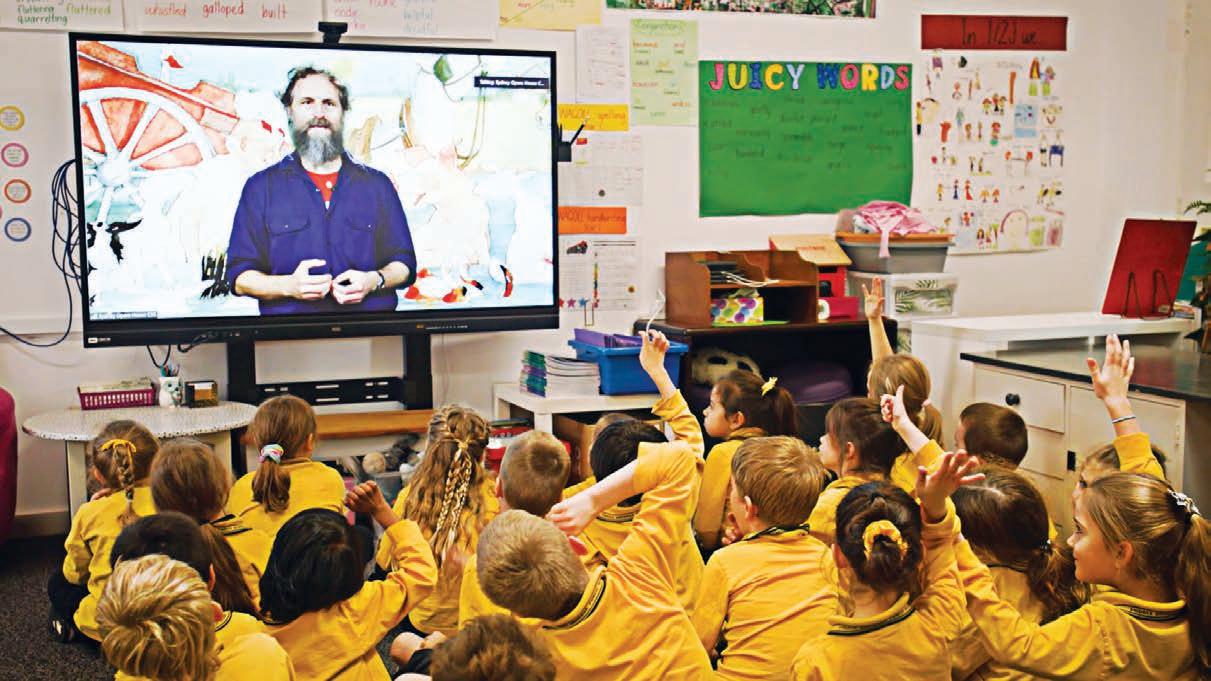
The team at Distance And Rural Technologies (DART) Learning believe that digital learning can greatly assist in creating a more fair and equitable education for all students.
For nearly two decades, DART Learning has been collaborating with content providers –
24 education matters primary CURRICULUM // DART LEARNING
DART LEARNING IS AN INITIATIVE OF THE NEW SOUTH WALES DEPARTMENT OF EDUCATION. PART OF THE DIGITAL EDUCATION SOLUTIONS AND EDUCATIONAL STANDARDS LEARNING IMPROVEMENT DIRECTORATE, IT IS DESIGNED TO MAKE EDUCATION MORE EQUITABLE AND ACCESSIBLE TO ALL STUDENTS.
An uptake in remote learning has seen rapid advancements in educational technology and online learning programs that have made education more accessible across the country.
including museums, galleries, research institutes, scientists, writers, athletes, artists, educational organisations, musicians, zoos, and more – to offer teachers, parents and students incredible educational virtual excursions. Over the past 12 years, the organisation has listed more than 15,500 excursions.

BRINGING THE WORLD TO YOUR CLASSROOM
The aim of DART Learning is to provide all teachers, students, and parents with engaging virtual excursions to enrich the school curriculum. With an extensive collection of over 3,800 virtual excursions from 150 content providers, all conveniently accessible through a single website, DART Learning delivers a seamless and timesaving search experience.
Through the DART Learning website, schools gain access to many expert educational content providers, with new virtual excursions being added regularly. Content can be viewed live, on-demand or tailored to the specific time preferences and needs of schools and students.
Teachers receive a tailored experience that aligns with their individual preferences when they log in to DART Learning. This personalised approach ensures that the excursions displayed cater to their specific needs. Additionally, teachers have the ability to refine their search by selecting criteria such as years and stage, key learning areas, subject, strand and sub-strand.
Alternatively, they can search via the School Calendar of Events, which provides a comprehensive list of activities categorised by school terms and dates, enabling teachers to effectively plan for
the entire year! Teachers can also explore DART Learning’s Special Filters which includes free virtual excursions, teacher professional development, student careers, and wellbeing.
DART Learning is an inclusive platform that fosters collaboration among content providers, as well as enabling them to connect students and teachers from all schools. The platform not only
The DART Learning website
Key features and benefits:
offers a free booking system but also allows the flexibility for content providers to use their own system if preferred.
In addition, DART Learning provides a team of in-house experts who are ready to assist with digital online production, marketing, data analytics, and ensure quality assurance for all virtual excursion listings. EM
• A free service to all teachers, schools and students
• Over 3,800 virtual excursions from more than 150 content providers & experts
• Tailored searches showing relevant virtual excursions to each user based on their preferences
• A user-friendly website designed with one uniform online interface
• Accessible content that can be linked to the curriculum
• Allows for collaboration between multiple content providers for more diverse and interesting content options
• Includes an easy-to-use integrated booking system and school calendar for scheduling virtual excursions
To learn more or register for DART Learning, visit: https://dartlearning.org.au
25 education matters primary
“At DART Learning, we believe every student deserves access to the rich array of virtual excursions found in museums, zoos, science centres and other institutions around the world, igniting a lifelong passion for learning.”
– The DART Learning team
DART Learning offers more than 3800 virtural excursions to enrich the school curriculum.
The chance of a lifetime
IN THE LEAD UP TO THE 2023 FIFA WOMEN’S WORLD CUPTM AUSTRALIA AND NEW ZEALAND, FOOTBALL AUSTRALIA HAS INTRODUCED SCHOOL FOOTBALL PROGRAMS AIMED AT ENCOURAGING STUDENTS TO LEARN THE GAME, IMMERSE THEMSELVES IN AUSTRALIA’S BELOVED FOOTBALL CULTURE, AND MAKE HISTORY AS PART OF THIS SPORTING EVENT.

For football enthusiasts, the legacy of Australian Football is truly the stuff of legends, cherished and loved by many, and the centre of a vibrant football culture which is celebrated at all levels across the country. Renowned as the ‘world game,’ football in Australia has a strong history of inclusion and multiculturalism and has accrued a rich and storied history.
THE BENEFITS OF LEARNING ABOUT FOOTBALL
As one of the oldest and most popular sports in the world, the game of football presents a number of benefits for children who learn how to play. Football is an excellent way to improve a child’s physical fitness and overall health, and helps develop strength, endurance, agility, and coordination abilities. The game requires significant physical output and energy that can reduce the risk of health complications and help build a more robust immune system, improve sleep quality, and promote healthy body image.
In addition to being a fun and engaging physical activity, football offers many social and emotional advantages that can aid in children’s healthy development. Playing football encourages children to foster positive relationships with their peers from diverse backgrounds and develops their understanding of teamwork, camaraderie and good sportsmanship. During gameplay, children learn to work together, support each other and communicate more effectively, which are skills that will translate into the classroom and when they are out in the community.
All of these things combined can build confidence and have a positive impact a child’s wellbeing. Furthermore, the discipline and competitive aspect of football often motivates children to set goals and fosters a sense of accomplishment and self-esteem in them.
By participating in football, children have the opportunity to develop essential skills and values that can prepare them for success in
26 education matters primary CURRICULUM // FOOTBALL AUSTRALIA
Football Australia has developed a school football program that includes activities and challenges that align with the upcoming FIFA Women’s World CupTM
the future. And with all of these benefits to the gameplay, is it any wonder that football is one of the beloved sports in the world?
EXPLORE FOOTBALL AUSTRALIA’S SCHOOL PROGRAMS
Ahead of the upcoming FIFA Women’s World Cup TM , which is being played for the first time in Australia and New Zealand in July and August, Football Australia has developed a comprehensive school football curriculum guide, as a part of the Sporting Schools program, with the aim of sparking a love of football in students through fun activities, games and challenges; while also teaching them the fundamental physical, social and cognitive skills required to become future leaders in sport.
Festival of Football
Schools are invited to join in the excitement of the upcoming FIFA Women’s World CupTM and bring football into the classroom with Football Australia’s new curriculum aligned, teacher-delivered fourweek program for primary schools – Festival of Football. The program will coincide with the FIFA Women’s World CupTM Australia and New Zealand, meaning that school kids around Australia can experience the world game in the classroom while the Commbank Matildas take on the world.
The new program brings football into the classroom via a new curriculum-aligned resource. Festival of Football is an exciting and flexible resource designed for teachers to help Australian primary school students celebrate the fun, fitness, and friendship of playing football. Each lesson focuses on a big idea related to the interacting with others component of the Health and Physical Education curriculum, as determined by the Australian Curriculum, Assessment, and Reporting Authority.
All programs can be tailored to suit the needs of each school and programs can range from four to 10 sessions, running anywhere between 30-60 minutes. The programs are inclusive and available to students of all abilities. The lessons explore the application of the big idea in the context of football and provide opportunities to apply this knowledge in gameplay. The principles learnt by the students in the classroom can then be applied in active football sessions or at a Festival of Football. Furthermore, Football
Australia will link local football clubs with schools to facilitate an ongoing relationship and provide further opportunity for students to continue their football journey outside of school, whether that be MiniRoos Kick Off, MiniRoos Club or Junior Football.

The Four-Week Program Curriculum
Week 1: Explore the theme by completing the interactive lesson in the classroom.
Week 2: Apply the theme, express and illustrate in the classroom.
Week 3: Synthesize the theme and prepare for the Festival of Football.
Week 4: Football on the school oval or in the school hall.
Football Fever
Another way that schools can join the excitement of the FIFA Womens World Cup™ is by hosting a Football Australia Football Fever event on campus.

Football Fever is an engaging, free and flexible way for Australian students in a modified format of small-sided games.
The objective of Football Fever is to celebrate diversity, apply basic skills in a supportive team environment, and to further enthuse children to be life-long supporters of the world game. Football Fever can run before, during
27 education matters primary
Football Australia’s Festival of Football will coincide with the FIFA Women’s World CupTM Australia and New Zealand, where the Australian Women’s Team, the Commbank Matildas, will be competing this year.
serve as a community event for schools, open to the involvement of parents as volunteers and spectators.
Football Fever has been developed to empower teachers to run their own intra-school tournament that replicates the FIFA Womens World Cup™. When schools register their Football Fever event with Football Australia, they will receive a free Football Fever resource that guides teachers through the organisation and delivery elements
of a mini tournament; including arranging teams, event plans and playing formats.
About Sporting Schools
Sporting Schools is Australia’s largest schoolbased sports participation program, providing an opportunity for children to get active and connect with community sport.

Football Australia has partnered with the Australian Sports Commission as the provider of

“As a former teacher myself, I think it’s wonderful to have a fully designed football curriculum where we can teach the students about the game itself. There’s no better time than this year to introduce football to students and I can’t wait to see how the fun, the fitness, the freedom and the friendship that can evolve from football will transform our next generation.”
-Rae Dower, Technical Director Women’s Football & CommBank Junior Matildas Head Coach
football within the program.
Football Australia’s programs are being offered to both primary and secondary schools across the nation, available to run before, during, or after school, in a fun, safe and educational environment. Schools can participate through Sporting Schools, or through self-funded programs and events. Each term, schools across Australia can apply for funding and grants to implement a football program for students in kindergarten to Year 8.
Across each state, Football Australia has qualified Participation Officers and local clubs ready to implement in-school and after-school programs for students of ages up to Year 8, including all-abilities programs. Using Physical Literacy principles as the core of each session guides, Football Australia has more than 200 qualified coaches that will focus on developing student’s movement skills, knowledge, and behaviours of students to gain confidence in their ability.
The goal of the program is to transition students to active participants in the football community and culture – and ultimately, encourage them to become long-term fans and passionate players of the game.
Primary school program – MiniRoos
The Primary School program is designed to introduce boys and girls of all abilities, to the
28 education matters primary CURRICULUM // FOOTBALL AUSTRALIA
(Left to right) Commbank Matildas’ players Hayley Raso, Mary Fowler, Sam Kerr, and Tameka Yallop celebrate a win together.
Football Australia has partnered with the Australian Sports Commission to provide football programs to primary and secondary schools across Australia.
fundamental skills of football and physical literacy. Sessions focus on learning new skills, being active, making life-long friends and potentially unearthing the next generation of heroes on the Subway Socceroos or the CommBank Matildas.

Secondary school program
Secondary School programs are designed for students in Years 7 and 8 to further develop their fundamental movement skills in a team environment. The program is delivered in an inclusive and engaging manner, targets all skill levels, and encourages a positive view towards an active and healthy lifestyle.
Futsal in sporting schools
The Football Australia Futsal program is designed to introduce the core basic skills and match play of futsal to children from Kindergarten to Year 8 with an emphasis on fun-learning and active participation. The futsal
variety of both indoor and outdoor settings, indoor gymnasiums, outdoor basketball courts, multi-sport courts. Futsal is the ideal option to keep students engaged in football skill development through the off-season and encourages students to be active indoors during hot or rainy seasons.
In addition, teachers can utilise new FIFA resources that specialise in post-program progression of both football and futsal for students to transition into local community competition.
Football in schools inclusive program
The Football in Schools Inclusive program is an adapted version of the MiniRoos program, catering for students with intellectual disabilities and autism. The program has been designed by Football Australia, in partnership with Special Olympics Australia, for delivery in special education environments. Coaches are
facilitate Teacher Delivered Football Program. Football Australia will guide schools through every step of the journey to ensure students receive the same experience as they do in the Football Australia coach-delivered programs.
CommBank Matildas Good Luck Messages
Students or schools can create a ‘good luck’ message for the CommBank Matildas at the FIFA Womens World Cup™ and Football Australia will hang it up at the team hotel during the tournament for the players to read.
Messages can be from an individual student, a class group or the whole school. The only requirements are that it needs to be created on a piece of paper and full of colour!
Design a football contest
Students can design their own unique footballs and potentionally score 50 of their designed footballs for their school! The winning design
29
Playing football encourages children to foster positive relationships with their peers and develops their understanding of teamwork and good sportsmanship.
Dr Vitomir Kovanovic is a Senior Lecturer in Learning Analytics at the Centre for Change and Complexity in Learning (C3L) at the University of South Australia. His research focuses on helping schools use machine learning and artificial intelligence to support student learning and teacher decision making. Dr Kovanovic obtained his PhD in Informatics at the University of Edinburgh, the United Kingdom, in 2017. He is currently the Editor of the Journal of Learning Analytics (JLA) and an Associate Editor at the Higher Education Research & Development (HERD) Journal.

Learner profiles: A more holistic view of learning
LEARNER PROFILES FOCUS ON CAPTURING CAPABILITIES SUCH AS CRITICAL THINKING AND COLLABORATION, AND PROVIDING A COMPREHENSIVE VIEW OF AN INDIVIDUAL STUDENT’S LEARNING PROFILE, WHICH EXPERTS FROM THE UNIVERSITY OF SOUTH AUSTRALIA BELIEVE COULD HOLD THE KEY TO IMPROVING EDUCATIONAL OUTCOMES.
There is a growing call for schools to move beyond graded assessment scores to include the skills and capabilities that students require to thrive in the future. One approach that has gathered significant interest is learner

profiles. In a recent paper, we reviewed several learner profile initiatives being implemented in Australia and internationally. It is important to understand the key benefits and challenges of these different forms of learner profiles and how they can best serve our schools and students.
WHAT IS A LEARNER PROFILE?
Learner profiles are visual representations of students that paint a richer picture of their learning than grades and academic scores alone. They typically include information about a student’s learning progress, extracurricular activities, learning behaviours, self-regulation, and wellbeing. Most learner profiles focus on capturing capabilities such as critical thinking and collaboration, on providing a more comprehensive view of student learning and, possibly, a future alternative to ATAR-based university admission.
30 education matters primary CURRICULUM // EXPER T CONTRIBUTOR - DR VITOMIR KOVANOVIC
WHAT ARE THE BENEFITS OF LEARNER PROFILES?
Firstly, learner profiles help teachers identify developmental needs and personalise student learning to address those needs. They provide a holistic view of students, which can help teachers understand student strengths and their progress across multiple subject areas. Learner profiles also allow students to make better career choices and transition into the workplace or further studies. Instead of the one-size-fitsall approach provided by ATAR and grade point averages, learner profiles allow more tailored career pathways and better transition between different systems.
By focusing on a wide range of data, learner profiles provide richer insights into student learning, allowing teachers to better understand students. Such data can also be used to analyse student cohorts (an entire class or a year level).

By visualising historical data, learner profiles help identify trends and patterns that would otherwise go unnoticed. Access to such data could improve student support and counselling by focusing the conversation with students on the actual data and evidence of their learning progress. Learner profiles can also help coordinate and share information between
teachers, which is often time-consuming and manual.
WHAT ARE THE KEY CHALLENGES?
The fundamental challenge is the lack of clarity about learner profiles and what kind of data they should contain. Each profiling approach uses different constructs and data, making profiles vague. This is particularly evident in how capabilities are defined, with a wide range of similar but still different terms. It is also unclear whether each learning area should focus on developing a specific set of capabilities or whether each capability should be integrated into every learning area.
Another critical problem concerns data collection, as some of the most useful data, such as data on capabilities, is usually captured manually. This raises the issue of the quality of judgement and equal and fair treatment for all students since each teacher might have different interpretations of relevant constructs.
The manual data capture also brings significant workload challenges, as collecting such data requires substantial time and effort by the teachers. At the C3L research centre at UniSA, we are exploring how artificial intelligence and machine learning can help with
data collection and reduce workload challenges.
Our work shows significant potential to automate large portions of data collection for some capabilities, such as critical and creative thinking. Such techniques would make it easier to adopt learner profiles and help reduce the already heavy teacher workload.
There is also an open question on integrating learner profiles into existing school practices. Any change to complex systems such as schools requires a staged approach and significant teacher input on what works and what doesn’t. There is a need for substantial professional development to help teachers integrate learner profiles into their teaching. This includes understanding learner profile dashboards and new data collection processes.
Finally, there is a need to shift from an assessment-oriented mindset to a development-oriented mindset. We also need to strive to assess learning progressions rather than performances at specific points in time. Such change requires a massive cultural shift and changes in incentives and constraints on school processes. EM
31 education matters primary
Student learner profiles include information about a student’s learning progress, extracurricular activities, learning behaviours, self-regulation, and wellbeing.
Contributing authors: Dr Vitomir Kovanovic,Dr Abhinava Barthakur, Professor Shane Dawson Education Futures, University of South Australia, Adelaide SA
A primary school STEM program for all
THE FIRST THREE YEARS OF PRIMARY SCHOOL PROVIDE A CRITICAL WINDOW OF OPPORTUNITY FOR TEACHERS TO ENGAGE STUDENTS IN POSITIVE LEARNING EXPERIENCES IN STEM. DURING THIS TIME, IT’S ESSENTIAL THAT STUDENTS HAVE EQUAL ACCESS TO QUALITY STEM EDUCATION, WITH OPPORTUNITIES TO LEARN, DEVELOP, AND THRIVE – ACCORDING TO EXPERTS AT THE UNIVERSITY OF CANBERRA.
Australia’s current STEM education outlook isn’t strong. In fact, the latest data from the Programme for International Student Assessment (PISA) shows, for the first time in the assessment’s history, that Australia has fallen to the OECD average level in mathematics performance. And while STEM occupations are growing at twice the rate of non-STEM occupations, the hardest jobs to fill are in STEM-related fields (skilled trades, engineers, technicians, and IT). Essentially, Australia’s STEM-education position highlights the significant gap between the demand for STEM skills and the academic outcomes of Australian students.
For teachers and school administrators, this begs the question: what can be done to help students have positive STEM learning
experiences, develop STEM skills, and build confidence with numeracy into the future? One potential solution is the ELSA: STEM in Schools program, being developed by worldleading education researchers at the University of Canberra (UC). The project is led by Centenary Professor Tom Lowrie, the Director of the STEM Education Research Centre (SERC) at UC. Professor Lowrie was also a cocreator of the much-loved Early Years Learning Framework (EYLF). The core philosophy underpinning the program is ‘STEM for all’ and the program aims to ensure students have access to authentic and contextual STEM experiences, irrespective of where they live.
Professor Lowrie says the ELSA: STEM in Schools program will feature play-based activities — both digital and analogue —

designed specifically for each year level.
“The program will be accessible for every child—regardless of gender, cultural heritage, socio-economic status (SES) or experience— and actively include those children in vulnerable, geographically-isolated, and non-traditional-learning communities who have often been excluded from STEM education opportunities,” says Professor Lowrie.
The history of the ELSA Program actually dates back to 2016, when Professor Lowrie’s SERC team won the Australian Government’s open tender to create the Early Learning STEM Australia Program for preschool-aged children. The first ELSA Pilot rolled out to 100 centres across the country in 2018, with more than 400 educators and 3800 children taking part. Following the success of this pilot, the

32 education matters primary CURRICULUM // UNIVERSITY OF CANBERRA
The ELSA: STEM in Schools program is currently being developed in preparation for the pilot in Term 1, 2024.
program was extended into 2019; and then, in 2020, the SERC team undertook a research project to determine the program’s efficacy.
The results of this research project showed significant performance gains in both STEM learning and numeracy for the children who participated in the ELSA Program for one year. For STEM literacy skills, children improved at a rate three times higher than children not involved in the Program. In terms of numeracy, the children improved at a rate twice that of children not involved in the Program. The ELSA Program also helped those most at-risk for lower mathematics
understanding achieve the largest gains in numeracy performance.
These promising outcomes prompted the Australian Government’s Department of Education to award further funding to the SERC team to develop a similar STEM-based program for the first three years of primary school. And so, ELSA: STEM in Schools was born.
“We’re developing this program to increase the participation of Australian students in STEM education, to give them confidence, and to boost their STEM skills in the early primary school years,” Professor Lowrie says.
“The ELSA: STEM in Schools program also provides a tangible mechanism for our researchers to share the most up-to-date, evidence-based STEM-education approaches directly with practising teachers.”
The ELSA: STEM in Schools program is currently being developed in preparation for the pilot in Term 1, 2024, with an expression of interest opening on 14 August 2023 to all Australian primary schools. The program will focus on content from Foundation year, Year 1 and Year 2 of the Australian Curriculum, with close alignment to learning outcomes for the relevant STEM-discipline curricula, as well as ACARA’s Numeracy Learning Progressions.
The program will provide students with the opportunity to explore an online, play-based
learning environment, delivered through a series of digital tools that are rich in STEM concepts. The digital activities will focus on developing spatial reasoning and logical reasoning skills, because spatial reasoning is the best predictor of whether children will end up in a STEM-related career.

Students will be able to complete the ELSA activities on any computer or hand-held device with a web browser. And, like its predecessor, the ELSA: STEM in Schools program will balance digital games with teacher-led, hands-on activities that can be completed in the classroom or the playground. In fact, only one-third of the program will take place on digital devices — limiting screen time but also giving students the opportunity to experience STEM scenarios that would be very difficult for teachers to reproduce in a real-life classroom setting (such as the perspective of a bird flying over the roof of the classroom). Importantly, the digital tools will collect student’s STEM literacy data, and report this data back to teachers, without time-consuming formal assessments.
“The ELSA: STEM in Schools program will also be beneficial to teachers, with a comprehensive professional development course designed to increase STEM knowledge, teaching capacity, and confidence in teaching STEM,” Professor Lowrie says.
The program’s philosophy of ‘STEM for all’ has also informed its primary objective, which is to increase children’s engagement and interest in STEM, leading to a significant and substantial national improvement in STEM literacy in the early primary years.
Interested teachers and school representatives will be able to register on the ELSA: STEM in Schools website from 14 August. The expression of interest will be open to all Australian schools, with the pilot program commencing in Term 1, 2024.
“We are very much looking forward to working with Australia’s primary school teachers to foster that confidence in STEM and a love of STEM in our youngest students,” concludes Professor Lowrie. EM
To find out more about the ELSA: STEM in Schools program and expression of interest, visit: elsaschools.edu.au or scan the QR code on the back cover of this magazine.

33
ELSA: STEM in Schools program will balance digital games with teacher-led, hands-on activities that can be completed in the classroom or the playground.
Centenary Professor Tom Lowrie – Director of the STEM Education Research Centre at the University of Canberra.
YOU NEED GET THE HELP




Advertise jobs today on education MATTERS


















powered by careerone
Empowering educators to create balanced classes


For many educators, building class lists is the foundation that every school year is built on. Making great classes is one of the most complex processes in a school, with so many data points, requirements, requests, and restrictions – it can quickly turn into a
In 2014, an innovative Melbourne-based teaching couple who understood firsthand how complex using placement cards, sticky notes and colour-coded spreadsheets was for building classes, decided enough was enough – there had to be a better way! This led to the development of the Class Creator software. Fast forward nearly a decade, and today Class Creator has coordinated over 4 million student placements, saving schools thousands
school community. Designed, developed and supported by educators, Class Creator understands that each school is unique. That’s why the Class Creator software is flexible to cater to the specific needs of every school.
USER-FRIENDLY AND STREAMLINED

The brilliant thing about using Class Creator is that creating balanced classes no longer needs to be a painstaking, time consuming task at the end of the school year. Class Creator takes the hassle out of making classes, by ensuring all the data is organised and displayed clearly, providing educators with all the tools they need to make great class lists. Through Class Creator, student data is organised and readily accessible at an
history in one place. Class Creator has been designed to be super user-friendly, so it doesn’t require staff meetings for training. If educators can use an Excel spreadsheet or fill in a Google Form, they will find Class Creator a breeze.

Class Creator General Manager Joel Westley provides his top tips for making great classes:


1. Star t planning early – Don’t leave it until November!
Educators can record comments on student behaviour, academic progress and friendships throughout the year, so no vital information will be omitted from consideration when class lists are formed.



2. Invest in Class Creator to save time, hassle and create well-balanced classes. The average teacher saves nearly two hours each year using Class Creator over traditional manual methods, equating to on average over 52 manhours per school. This leaves educators with more time to do what they do best – educate the next generation. With over 100,000 educators using Class Creator across the globe, and offices in Australia and the United States, schools around the globe can rely on Class Creator to take the hassle out of making classes. EM
To learn more, visit www.classcreator.io/ edumatters to register your interest and save 20% when you sign up.
Interested to learn more?
Joel Westley will be onsite at the National APPA Conference in Hobart kicking off on the 31st of July, as well as EduTECH 2023 taking place in Melbourne at stand #1532 on the 24th & 25th of August.

35 education matters primary CLASS CREATOR // CURRICULUM
CLASS CREATOR STREAMLINES THE CLASS CREATION PROCESS FOR EDUCATORS AND PROVIDES THE TOOLS THEY NEED TO CREATE THE BEST CLASSES FOR THEIR STUDENTS, TEACHERS, AND SCHOOL COMMUNITY.
Joel Westley, General Manager, Class Creator.
Class Creator is a powerful tool for simplifying and streamlining the class creation process.
Supporting child development with innovative play spaces
WILLPLAY IS ONE OF AUSTRALIA’S LEADING PLAYGROUND MANUFACTURERS, PROVIDING EXCELLENT PLAY VALUE FOR EVERY SCHOOL PROJECT. DESIGNED AND MANUFACTURED IN AUSTRALIA, FOR AUSTRALIAN CONDITIONS, THE COMPANY SELECTS PLAYGROUND MATERIALS FOR RESILIENCE, DURABILITY AND LONG-LIFE.

Although the importance of play for a child’s development is generally well-established, the role a school can play in supporting this aspect of childhood development is sometimes overlooked, according to National Sales Manager for WillPlay, Nathan Lee.
“The last few years have shown us the importance of physical and mental wellbeing for children, and the clear links between the lack of play and social interaction with negative effects on their wellbeing,” says Mr Lee.
A report by the Gonski Institution for Education from the University of New South Wales titled ‘Why is play important?’ states:
“It is vitally important that your child has access to play at school. And not only in early years but throughout the entire school. In a recent poll, 85 percent of Australians agreed that children today spend less time playing, compared to when they were growing up. While, a further 93 percent agree that play helps children to build the skills they need for the future.“
“WillPlay works with schools to custom design a play solution based on user age, user needs, budget, existing shade and natural elements. An investment in play can be a challenging time for schools as there are many
alternatives, and not every piece of equipment is right for every school,” says Mr Lee.
“Additionally, WillPlay’s designers will determine the best use of space and the most suitable equipment for a school’s project.”
MAKING PLAYGROUNDS ACCESSIBLE AND INCLUSIVE
When working toward solutions for schools that cater to special needs, there needs to be a balance between accessibility and inclusion, according to Mr Lee.
“Getting this balance right will make your play area inviting for all students and all
36 education matters primary BEYOND THE CLASSROOM // WILLPLAY
abilities. Social inclusion is just as important as physical inclusion and designs can be customised to ensure that all children can play together in a fun and safe environment,” he says.
“At WillPlay, we understand the importance of play for physical and mental well-being, especially when children have so many digital, non-physical play options. Improved educational and behavioural outcomes can be attributed to play in a school setting, and it enforces how important play and fitness equipment can be in a school environment.”
PLAYGROUND DESIGN
With more than 10 years of designing and manufacturing play and fitness equipment in Australia, WillPlay offers full design and construct services to bring any project to life, regardless of size or budget.
“In designing our Australian made range of play and fitness equipment, we chose to use Australian recycled plastics, aluminium, stainless steel and ensure that all elements are manufactured in our own factory to ensure quality control is second to none,” explains Mr Lee.
“Not only does this enable the best value and product life for schools, it also allows a degree of customisation and theming that is difficult to
match. WillPlay’s design and project management team have extensive experience in turning a school’s concept into a reality that keeps students engaged and challenged, all within the confines of Australian standard designs.”
PLAYGROUND CUSTOMISATION
When buying a play system from WillPlay, a school does not have to simply purchase from a catalogue range of standard products. With their in-house design and manufacturing, customisation of design elements, colours and themes mean school’s will get the perfect system for their students and budget.
“With representatives and distributors all over Australia, WillPlay can turn your next project into something that other schools will be envious of,” says Mr Lee.
“There are very few equipment manufacturers that can offer the level of design customisation as WillPlay. Offering a full design and construct service WillPlay can offer complete turn-key packages including equipment, softfall and shade structures.”
SUPPORTING AUSTRALIAN FAMILIES AND BUSINESSES
Australian manufacturing supports Australian families just like the ones in each school. WillPlay’s strong local supply chain means that every system has a high content of Australian sourced materials – keeping investment in Australia, while further supporting Australian businesses and Australian families.
When looking for something a little different, schools can consider combining play and fitness with WillPlay’s Urban Warrior range. These systems can also be incorporated into the school’s physical education program, and be used to benchmark children’s fitness and functionality over time.


WillPlay’s latest generation of products, the Boxie and Giant Tunnel ranges, take school play to a new level. When schools need to cater to a wide range of user abilities, the Sensory and All Abilities ranges will keep kids engaged and playing together. WillPlay’s playground designs will change the way that students and schools look at play. EM
For more information visit https://www.willplay.com.au
37 education matters primary
Students at Avoca State School in Bundaberg hang out at the school’s new playground, designed and built by Willplay.
Students at Burnett Heads State School enjoy the school’s new custom playground by Willplay.
School leaders and the law
THE PROFESSIONAL LEARNING PROGRAM ENTITLED: SCHOOL LEADERS AND THE LAW, HAS BEEN CREATED BY DR STEPHEN BROWN, MANAGING DIRECTOR OF THE BROWN COLLECTIVE AND MEGAN KAVANAGH, PARTNER AT COLIN BIGGERS & PAISLEY, ALONG WITH THEIR RESPECTIVE TEAMS. IT AIMS TO ADDRESS THIS SIGNIFICANT AREA OF PROFESSIONAL SUPPORT REQUIRED BY THOSE WORKING IN SCHOOLS AND THE BROADER EDUCATION SECTOR.
Policy makers, school leaders, teachers and broad stakeholder groups within the education sector undertake their professional practices in an ever increasing and litigious operating environment.
Principals and teachers who are at the core of the delivery of school provision are further faced with increasing demands on their roles and associated responsibilities.
As a result, it is essential that educators feel equipped with the appropriate knowledge and skills to enable them to respond to current and emerging issues of a legal nature.
The development of effective executive management capabilities is seen as a critical dimension of the role of key school leaders. A review of school leadership standards
from a selection of international education systems is evidence of this.
In Australia, the Australian Professional Standard for Teaching and School Leadership (AITSL) notes that one of the roles and responsibilities of a principal is to lead the management of the school including the human, physical and financial resources effectively, ensuring good governance and meeting policy, legal and accountability requirements.
In Scotland, the Standards for Leadership and Management 2012 developed by the General Teaching Council also privileges the centrality of management capability as crucial to the role and associated responsibilities of school heads.
The Ontario Leadership Framework 2012 also acknowledges the importance of school leaders having an awareness of their legal requirements of their role.
Given the centrality and importance of executive management to successful school leadership and specifically, school principal or headship, it is concerning that many aspiring to or in such roles reported little or no preparation or support to enable this or other leadership capabilities to be developed.
The case therefore exists for a much more concerted and proactive approach to the enhancement of capability in this area of school leadership practice. In a report reviewing effective preparation for aspiring school principals, AITSL noted that the

38 education matters primary BEYOND THE CLASSROOM // THE BROWN COLLECTIVE
The development of effective executive management capabilities can be critical in a school leadership role.
development of management skills prior to taking up the role of principal was one of three priorities for any preparation program for such a role.
This sense of urgency about executive leadership management knowledge and skill development is reflected in other contexts.
In a report entitled ‘The Making of the Principal: Five Lessons in Leadership Training,’ The Wallace Foundation note that key exemplary programs require coursework in areas such as management of resources and operations, ethical practices and political, social, economic, legal and cultural contexts.
Critically, current and future school leaders require knowledge in the area of the law and the legal context in which they discharge their increasingly complex roles.
PROGRAM OVERVIEW
The program will be delivered in the form of seven discrete but related modules:
This module will consider what is ‘good governance’ in schools and educational institutions, providing an update on the consequences for children, staff and the community in respect of duty of care, contract obligations and legislation and regulation.
expectations for your school and stakeholders
• Setting up a data security and privacy plan (including policies and ongoing management)
• Where privacy and security is going
• Whether security and privacy by design should be sought
• The ‘what, when and why’ of access
• Whether on premises or cloud, your control over your data stack
• Key items and provisions to look for when engaging it providers (including the allocation of risk)
4. Dealing with turbulent and trying matters –David Grant
This module will look deeply at the strategies for schools and educational institutions when dealing with trying and turbulent matters, including:
• How to identify matters that are likely to become trying and/or turbulent
• Understanding vulnerability driven behaviour
• Practical steps to diffuse and reduce turbulence, including de-escalation
• How to best protect yourself in cases of turbulence and conflict
• How to manage a conflict resolution process when all else fails, including mediation techniques and processes
5. Employment and safety – Adam Foster
This module will look at a range of risk and compliance issues schools should consider in respect of property, commercial and compliance. This will cover issues such as implementing a constitution, managing your PNF, procurement contracts and contracts with camp providers, through to licensing and leasing school facilities to or from third parties, expansion and redevelopment of campuses, and availability of transfer duty exemptions with respect to acquisitions of neighbouring properties for future development.
This module will look at the two streams of safety - ‘how do you keep your people safe’ and ‘how do you inspire safe people’. This will include an in-depth dive into WHS laws and the fair work act, risk management processes, psychosocial hazards, and various case studies relevant to schools and educational institutions.
6. Safeguarding – Megan Kavanagh and Georgina Wong
This module will look at safeguarding and child protection through the lens of schools. This will include insight into:
• Safeguarding and child protection
• Relevant legislation relating to safeguarding
7. Anti-discrimination – Kristen Lopes
This module will look at discrimination from the perspective of students and staff. This will include:
• Managing student behaviour in the classroom and online to mitigate against claims of bullying and dealing with suspensions and expulsions
• Student gender diversity
• Managing staff discrimination complaints
• Managing staff sexual harassment and bullying complaints
The program will be conducted in a face-toface mode over two consecutive days. Each of the modules will be presented in the form of a two-hour session featuring expert input, case study peer learning and the application of a range of protocols to stimulate participant engagement. Graduates of the program will be provided with ongoing access to Colin Biggers and Paisley’s webinar series and position papers.
The Target audience for the School Leaders and the Law program is:
• School leadership teams
• Principals and School Heads
• School Business Managers, Bursars and Chief Finance Officers
• System leaders
• Policy professionals with a focus on compliance, regulation and legal matters
• Aspiring school leaders. EM
PROGRAM REGISTRATION AND COST
For program registration please contact: Helen Langborne, Director of Operations, The Brown Collective.
Email: helen@thebrowncollective.com.au, Mobile: 0427 219 664.
• Cost per individual participant: $1,850 plus GST
• Program participant numbers limited to 50.
LOCATION AND PROGRAM DATES
The program will be delivered at the offices of Colin Biggers & Paisley.
This module looks at strategies for schools for mitigating their cyber risk profile, privacy concerns and planning for better security, including:
• Identifying the security and privacy
• Safeguarding in schools and specific examples
• Implementing systems and processes
• Creating a dialogue of safety
Level 23, 181 William Street
Melbourne VIC 3000 Australia
Thursday 7 and Friday 8 September 2023
39 education matters primary
1. Governance – Megan Kavanagh
2. Property, commercial and compliance –Simone Whetton and Rebecca Castley
3. Privacy and cyber – Morgan Lane and Katherine Jones
Reducing restrictive practices and occupational violence in education
NICK BURNETT, MANAGING DIRECTOR AT TEAM TEACH AND AUTHOR OF ‘LEADERSHIP AND SPECIAL EDUCATION NEEDS’, DISCUSSES RESTRICTIVE PRACTICES AND OCCUPATIONAL VIOLENCE IN THE AUSTRALIAN EDUCATION SYSTEM AND CHALLENGES SCHOOLS TO ADOPT NEW WAYS OF THINKING ABOUT THE PROBLEM.

The decision to use the phrases ‘restrictive practices’ and ‘occupational violence’ in this article stems from the increasing prevalence of referring to the more general language of restrictive practices as opposed to just physical restraint. Furthermore, the reading of recent findings from a principal survey in Australia, in addition to some recent work within the health sector, has shown me that these are more generally widely accepted terms.
As there are a range of definitions for these terms, I am using the following for the purposes of this article:
and other school staff.’ The Riley survey summarises the current situation in education.
KEY HIGHLIGHTS
• 83 percent of school leaders have been subjected to at least one form of offensive behaviour in the last 12 months
• 62.1 percent of participants reported being subjected to at least one offensive behaviour from parents and carers, and 39.9 percent reported being subjected to at least two offensive behaviours from parents.
Nick Burnett is the Managing Director of Australia & New Zealand and International Director of Coaching for Team Teach. He has over 30 years of experience working in mainstream and special schools as a teacher, senior leader, and school principal in both day and residential settings. Nick is also an author, accredited Restorative Practice facilitator, and leadership coach. He is the author of Leadership and Special Education Needs and has written many publications about reducing risk and restraint, leadership, and positive approaches to behaviour support. Nick now supports and develops Team Teach trainers to equip them with the attitudes, skills, and knowledge for successful coaching.
• Restrictive practices: A restrictive practice is any action that has the effect of restricting the rights or freedom of movement of a person, with the primary purpose of protecting the person or others from harm.
• Occupational Violence: As any action, incident or behaviour that departs from reasonable conduct in which a person is, threatened, harmed, injured by another person in the course of, or as a direct result of his or her work.
In Australia, there has been an annual survey undertaken for a number of years now called ‘The Australian Principal Occupational Health Safety and Wellbeing Survey,’ headed by Professor Philip Riley. And more recently, the AITSL released the ‘National strategy to address the abuse of teachers, school leaders
• 43 percent of school leaders had been exposed to threats of violence
• 37 percent of school leaders had been exposed to physical violence
• 33 percent of school leaders had been exposed to bullying
• For threats of violence the rate was 5.5 times greater than the general population, physical violence was 9.4 times greater, and bullying was 4 times greater
CHALLENGING BINARY THINKING IN SCHOOL LEADERSHIP
Although, there is a wealth of research and articles on leadership in education, I’d like to share two frameworks that could be of assistance to leaders in developing a new approach to reducing both restrictive practices and occupational violence. I believe that by adopting these two frameworks, and
40 education matters primary BEYOND THE CLASSROOM // EXPERT CONTRIBUTOR – NICK BURNETT
challenging traditional binary thinking, school leadership can better address all angles of this multi-facted issue.
1. The polarity thinking model
In my work within the education system, I’ve observed a tension between sections within the organisation when its focus is either on reducing restrictive practices for students, or focussing on reducing occupational violence for staff. By this, the issue becomes a decision as to whose rights are more important. Whereas, in reality, both have equal merit and are of equal importance.
As humans, we often fall into the polarity trap of binary thinking where we create an unnecessary duality with an either/or line of thinking. The polarity thinking quadrant model (Figure A) gives us an opportunity to explore the tension in a proactive way.

In the top boxes, we see the hopes of focusing on reducing restrictive practices on are on one side and occupational violence on the other. While in the bottom boxes, are places to recognise fears of the impact on the other if there is too great a focus. By exploring these dualities, it opens up a constructive discussion about how an organisation can recognise these patterns and respond appropriately.
2.
Agility and adaptability
Another example of binary thinking that can have adverse outcomes is the expectation that leaders should be only proactive, rather than reactive. However, I believe that the very nature of schools means that there is always going to be
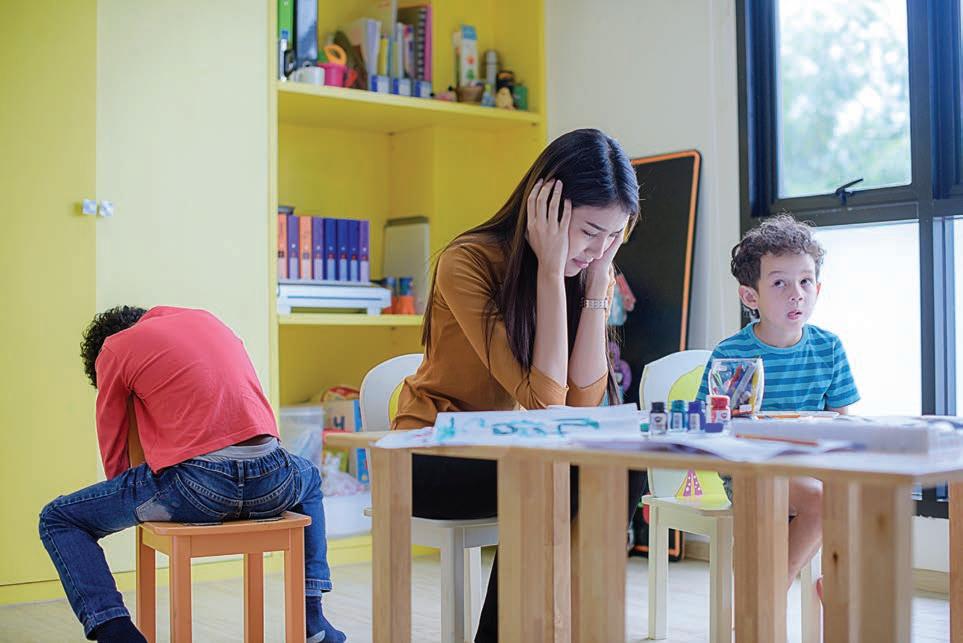
certain amount of ‘agility’ and ‘adaptability’ from school leadership and staff.
My take on what these words mean in this context is:
• Agility: The ability to act with a quick response to what is happening in the short-term, react, and respond to the day-to-day challenges that arise (REACTIVE)
Adaptability: Adaptability is often driven by an innate sense of curiosity as to how to improve. This takes longer to action as it’s around permanent change over a period of time. These changes are likely to be slower to be implemented, but are needed for long-term success (PROACTIVE)
WHAT IS MORE IMPORTANT?
Much like the equity of importance between focussing on both student and teacher wellbeing, I believe agility and adaptability are equally important actions – particularly, in relation to leading the reduction of restrictive practices and occupational violence.
School leaders need to take their organisations on a journey to shift their culture to one where there is a dual focus on both the young people being supported and the staff who undertake a rewarding but often challenging role, in addition to training staff on how to respond and react in the moment as part of a more long-term solution strategy. EM
41 education matters primary
Figure A: The polarity thinking quadrant model. Source: Be Radical 2023.
Reducing occupational violence in schools: Studies show that abuse of teachers, school leaders and other school staff is an ongoing issue in the Australian education system.
Explore EduTECH 2023
EDUTECH 2023, AUSTRALIA’S LARGEST EDUCATION CONFERENCE AND TRADE SHOW, IS SET TO RETURN TO MELBOURNE THIS YEAR WITH THE AIM OF DELIVERING A BIGGER AND BETTER EVENT THAN BEFORE. THE TWO-DAY CONFERENCE WILL SHOWCASE THE LATEST TECHNOLOGY AND TRENDS, AND THE MOST CUTTING-EDGE SOLUTIONS IMPACTING THE EDUCATION SECTOR RIGHT NOW.
This year, EduTECH is taking a future-forward approach, essentially doubling its capacity, and expanding its offering to include 10 seminars that will be paid to attend, and 10 free-to-attend seminars happening on the expo floor, with the aim of further driving learning, teaching, and training forward, while at the same time, envisioning what the classroom of the future might look like.
Discover more details on EduTECH 2023’s conferences, speakers, and panels in the program list below.

FEATURED KEYNOTE SPEAKERS
• Gary Stager, PhD. Founder, CEO of Constructing Modern Knowledge
• Richard E. Culatta, CEO of the International Society for Technology in Education
• Saku Tuominen, Founder, HundrED
• Caroline Wright, Director General, British Educational Suppliers Association and EdTech Exchange
• Laura Overton, Founder, Learning Changemakers
• Dr Tim Patston, Educator, Researcher & Designer of Innovative Professional Development
• Professor Chris Walsh, Dean and Chief Academic Officer, Victoria University (VU) Online
• Philip Regier, University Dean for Educational Initiatives & CEO of EdPlus, Arizona State University
• Andy Griffiths, Australian Children’s Author
LEADERS PANEL
• The national imperative to create more tech workers - Hugh Williams, Co-Founder and Chair, CS in Schools. Martin Bean, Founder & Chief Executive Officer (Former ViceChancellor & President of RMIT University), The Bean Centre. Bridget Loudon, Founder & CEO, Expert360
• Flexible pathways: Government strategy
and policy (The future of flex/hybrid/digital strategies)- Sandra Milligan, Director, Assessment Research Centre & Melbourne Graduate School of Education, University of Melbourne. Julie Lindsay, Senior Education Technology Advisor, University of Southern Queensland. Bhavneet Brar, Principal Education Officer at Department of Education, Western Australia
• Building wellbeing through explicit and implicit educational practices - Anne Johnstone, Principal, Ravenswood and Kate Barbat, Head of Positive Education, Ravenswood
• The use of data at a school level to enact change - Dr Raju Varanasi, Director, Data Intelligence & CIO, Catholic Education, Diocese of Parramatta and Dr David Kellermann, Senior Lecturer, UNSW
• Generative AI in education, including text and image generation - Leon Furze, Director of Learning and Teaching, Monivae College Hamilton
42 TECHNOLOGY // EDUTECH 2023
DIGITAL TECHNOLOGIES STREAM
• Integrating virtual reality into classrooms: a multi-school study with curriculum, pedagogical and learning insights - Erica Southgate, A/Prof, Emerging Tech for Education Research, University of Newcastle
• Leverage design thinking and experiential learning through Augmented Reality - Jason Lane, Junior, Middle & Senior Schools eLearning Pedagogy Leader, Villanova College
• Robotics: Pedagogy before Play - Adam King, P-12, Instructional Designer, Suncoast Christain College. Nicola Flanagan, Deputy Principal, Patricks Road State School. Emily Gibbs-Connor, Head of Digital Learning, Lauriston Girls’ School Gibbs Connor
• Tips, Tricks and Best Practices for Teaching
Object Oriented Programming - Michelle Chomiak, Digital Technologies Teacher, St Mark’s Anglican Community School
• Teaching AI and Machine Learning in the Primary Years - Laura Bain, Head of Emerging Tech and Innovation, Matthew Flinders Anglican College
• Successful Coding Techniques - Toan Huynh, Director Learning & Teaching, CS in School, Grok Academy
AI SESSIONS
• Transforming Education: Harnessing the Power of AI to Enhance Student Learning - Deirdre Farrar, eLearning Resource Teacher, Mount St Benedict College
• Why you need to teach AI in your classroomArgiro Anagnostu, eLearning Coordinator P-6, Redlands (C)
Grammar School
• Taking action with the technologies curriculumDan Heap, Assistant Director, Academy of Future Skills
• AI in schools: The impact on cognitive and social development - Naz Zengin, Educational Leader, Department of Education, Victoria
MUSIC SEMINAR
• Hip-Hop Creativities in Music Education - Ethan Hein, Professor of Music Technology, NYU and Montclair State University (USA)
• Creativity in music education - Dr James Humberstone, Senior Lecturer, Music Education, Sydney Conservatorium of Music
• How music teachers can incorporate technology into the music curriculum - Katie Wardrobe, Midnight Music
WELLBEING SEMINAR
• The why, what and how of school wellbeing - Prof Lea Waters PhD AM
• Leveraging Ed Tech to enhance school-based wellbeing education: Strengths and limitations
- Dr Anneliese Gill, Dr Kent Patrick & Professor Dianne Vella-Brodrick, Centre for Wellbeing Science, University of Melbourne
• Implementing evidenced based whole school wellbeing on a budget - Carolyn Spears, PosEd in Government Schools
DIVERSE EDUCATION NEEDS & INCLUSION SEMINAR
• How emerging technology can support neurodiverse students in a mainstream classroom, not as an assistive tool, but as
digital learning - Nerissa Jones, Digital Learning Manager, Education and Outreach, CSIRO
• Diverse learning, sensory needs and the inclusive classroom - Nicole Torres, Education Community Coordinator and Elisabeth Salle, Education Product Manager, Autism CRC Autism CRC and Elisabeth Salle
PRE-EVENT WORKSHOPS
By participating in EduTECH’s pre-event workshops, attendees can gain up to seven hours of professional development by participating in pre-event workshops. These full-day workshops, hosted by qualified trainers, offer a hands-on learning experience and the chance to explore innovative ideas and emerging practices in teaching and learning. EM
EVENT DETAILS
Event: EduTECH Congress & Expo 2023
Location: Melbourne Convention and Exhibition Centre
Pre workshops: Wed 23 Aug 9am -4pm Day 1: Thur 24 Aug 9am - 6pm Day 2: Fri 25 Aug 9am - 4pm
As Official Media Partners for EduTECH 2023, Education Matters Magazine is offering an exclusive discount to our readership.
Visit www.edutech.net.au for more information and enter code ‘EM20’ for an extra 20% off registration today.

43 education matters primary
Grok Academy: Cybersecurity unplugged
GROK ACADEMY HAS INTRODUCED NEW CYBERSECURITY RESOURCES FOR LOWER PRIMARY SCHOOL STUDENTS THAT ARE INTENDED TO SUPPORT THE AUSTRALIAN CURRICULUM AND PREPARE STUDENTS FOR DIGITAL FUTURES.
When Grok Academy first launched the Schools Cyber Security Challenges in February 2019, as part of the Australian Curriculum: Digital Technologies (AC:DT) curricula, one of the key takeaways in the media coverage was that parents often don’t consider the dangers of social media posts celebrating their children’s birthdays. This is because birthdays are often used as passwords – and by revealing the dates of a child’s birthday, individuals might inadvertently divulge their password.
In the world of cybersecurity, seemingly harmless, simple actions taken online can have some potentially serious consequences. This is why it is critical that children and parents become well-versed in the Australian Curriculum: Digital Technologies (AC:DT) resources – perhaps one of the only curricula that children can teach their parents.
CYBERSECURITY CURRICULUM FOR LOWER PRIMARY STUDENTS
When Grok Academy initially created the Schools Cyber Security Challenges for Years 9-12, they were intended to be taught with the compulsory AC:DT Curriculum. Recently, however, Grok Academy launched new cyber resources for early years and lower primary students in Years F-4, which have been developed to meet the new requirements of Version 9 of the Australian Curriculum.
For Years F-2, the focus is on understanding and identifying personal data and learning about usernames and passwords, such as those used for their school accounts. It also introduces the subject of privacy and the notion that some websites and apps store personal data online.
For Years 3-4, the expectations are on creating and memorising passwords that are easy to remember, but hard for others to guess (so, no birthdays!). It also asks students to consider what personal data is stored and shared in their online accounts, and what the associated risks could be.
DIGITAL DETECTIVES
The most exciting element of these new resources for early primary is a new ‘unplugged’ activity called Digital Detectives –a simple card game that is engaging, fun and educational for young students and teachers alike. Grok Academy has created realistic scenarios and characters that kids will relate to easily and the game guides them to make safe choices when tempted by friend requests or sharing private information.

Although it may seem counterintuitive to use physical props for a digital curriculum, the team at Grok Academy felt it was more important to use assets that were 100 percent
accessible to all early primary students across Australia – without needing to rely on fast broadband or computer equipment.
The card game could not be simpler: Players pick one card from the pile and follow the instructions. Play finishes when all the cards have been used, or when the chosen duration of time ends. The player with the most cards wins the game. There are also blank cards at the end of the pack for teachers to include their own scenarios.
As an example, one scenario focuses on personal privacy, based on the fact that some websites and apps store personal data online. This helps kids to understand why it is important to identify what personal data is stored and shared in their online accounts and discuss any associated risks. As it is a K-2 resource, the scenarios and options are simple and easy to relate to.
For the Years 3-4 games, the scenarios and options are more nuanced, reflecting real-life situations that students in this older year group
44 education matters primary TECHNOLOGY // GROK ACADEMY
As part of the compulsory Australian Curriculum: Digital Technologies, Grok Academy has launched new cybersecurity resources for lower primary students Years F-4.
would find themselves in.
With the support of industry and government partners – ANZ, The Australian Signals Directorate, The Department of Industry Science and Resources, AWS, BT, CBA, Fifth Domain, NAB and Westpac – all of the Digital Detectives card games have been made free to every school across Australia.

WHY START YOUNG?
The need for students, even as young as early primary school students, to understand the fundamentals regarding online privacy and security is stronger than ever. And here’s why: According to Statista, over a third of 2- 5-year-olds in Australia either have their own mobile phone (9%) or have access to someone else’s (22%). Regarding other devices, approximately 18 percent of 2- 5-yearolds have their own laptop, tablet, or PC, while 8 percent have their own login on a shared laptop,
tablet, or PC. Unsurprisingly, these percentages increase as the student population gets older.
At the same time, hacks and cybercrime continue at pace, evidenced by the news about Optus, Medibank, Uber, LJ Hooker, and many other, data breaches last year, these issues can occur regardless of age demographics, geography, or socioeconomic variations.
Therefore, the Grok team believes that starting cyber education as early as possible is critical to ensure that cyber security skills are learned and embedded when they children first begin to learn about using technology. Furthermore, when kids engage with these programmes – they work. The Schools Cyber Security Challenges has been efficacious, reaching over 170,000 students (46% of whom were female).
A 2021 survey conducted by Grok Academy found 77 percent of students believe the Cyber Security Challenges gave them an understanding
of personal cyber security risks. From an educator perspective, the survey found over 80 percent of teachers believe that the Cyber Security Challenges gave their students insight into the role cyber security plays in industry, while over 90 percent found the resources helpful in delivering the Digital Technologies curriculum.
The project also sparked interest in cyber security as a profession, with 22 percent of students stating that they would consider a career specifically in this field. Given Australia needs another 156,000 digital technology workers by 2025, this is heartening news for Grok.
THE ROLE OF TEACHERS AND PARENTS
Despite the uptake in interest in cybersecurity curricula – there is still more work to do. Interestingly, according to the Federal Government’s National Online Safety Survey, only one third (31%) of teachers, carers and supervisors have been trained in how to identify or respond to children at risk from using the internet. This is concerning, highlights the Grok team, since teachers have a critical role to play in formal and informal cyber education, while parents should guide and model cyber safety behaviour at home.
The Cyber AU Privacy resources, created by Grok Academy, therefore include lesson resources that make it easy for teachers to understand and deliver Version 9 of the AC:DT curriculum confidently. These include teacher lesson plans, student booklets, and parent handouts. The additional materials ensure that teachers can share what and why the students are learning, and parents are armed with basic information to reinforce the lessons and behaviours their children are embracing at school.
Grok Academy believes that the Cyber AU Privacy resources will be an important foundation for students developing the skills and understanding to stay safe online and keeping their personal data private. EM
For more information or to have a Digital Detective pack delivered to your school, visit: grok.ac/primary-privacy

45 education matters primary
Grok Academy’s Digital Detectives ‘unplugged’ card game is a free resource available to all Australian schools that teaches children about the importance of online privacy and security using realistic scenarios and characters that kids can relate to.
Grok Academy’s lower primary level Schools Cyber Security Challenges are designed to teach children the fundamentals of online privacy and security at the critical time when they first start learning how to use technology.
Julie Inman Grant is Australia’s eSafety Commissioner. In this role, Julie has led the world’s first government regulatory agency committed to keeping its citizens safer online, under the new Online Safety Act 2021. She further plays an important global role as Chair of the Child Dignity Alliance’s Technical Working Group and as a Board Member of the WePROTECT Global Alliance. The Commissioner also serves on the World Economic Forum’s Global Coalition for Digital Safety and on their XR Ecosystem Governance Steering Committee on Building and Defining the Metaverse. She was reappointed for a further 5-year term by the Australian Government in January 2022.
Teaching safe online habits to our youngest students
HARDLY A DAY GOES BY WITHOUT REPORTS OF SOME NEW RISK TO CHILDREN ONLINE, BUT TALKING WITH THEM EARLY AND OFTEN – AND TEACHING THEM ABOUT ONLINE SAFETY – CAN EQUIP THEM WITH THE SKILLS THEY NEED TO STAY SAFE, ACCORDING TO THE AUSTRALIAN ESAFETY COMMISSIONER JULIE INMAN GRANT.
At eSafety we’re very conscious of the trauma online harms can cause and unfortunately complaints are growing across all our reporting schemes.
Last year alone we saw a 70 percent increase in cyberbullying complaints, for example, and reports of image-based abuse involving young people continue to rise.
Our research shows most young people have been exposed to some form of harmful content by the time they reach 17.
But we also know that technology use at home and school can bring many benefits for young children.
eSafety’s research shows 81 percent of parents with children aged 2 to 5 report their child is using the internet, so we have to start educating them at an early age. That way they can enjoy the benefits and hopefully avoid most of the risks.
Finding age-appropriate and curriculumaligned online safety resources for this age group can be challenging. To help support teachers, parents and carers, the eSafety Commissioner has developed a new package of resources tailored for young children (aged 5 to 8) to help them build good habits when using technology and to promote positive online experiences.
And what better way to do it than with a quirky gang of lovable cartoon characters?
NEW ONLINE SAFETY RESOURCES PREPARE CHILDREN AGED 5 TO 8 FOR LIFE ONLINE
We deliberately chose to develop the package with educators not only to incorporate their educational expertise and deep knowledge of the children they teach, but also to ensure we met their needs as effectively as possible.
The result is a suite of classroom activities, teacher professional learning modules and activities for parents and carers to do at home with children aged 5 to 8, complementing and building on eSafety’s Early Years program for younger children.

Teachers know well how tricky it can be keeping a young audience engaged, but classroom tools that serve to make content relatable can help.
MEET THE MIGHTY HEROES
Enter The Mighty Heroes, a quirky quartet of loveable bush critters who anchor our eSafety classroom messages. Their mission is to teach children about online safety in a way that’s engaging and fun. Each character has an online safety superpower to teach children about eSafety’s four key online safety messages:
• Wanda the echidna: I am responsible – I protect my personal information.
• River the sugar glider: I show respect – I am kind and caring to others.
• Dusty the frilled neck lizard: I trust my
46 education matters primary TECHNOLOGY // EXPERT CONTRIBUTOR – JULIE INMAN GRANT
feelings – I ask for help when something doesn’t feel right.
• Billie the bilby: I investigate – I question what I see, hear and do online.
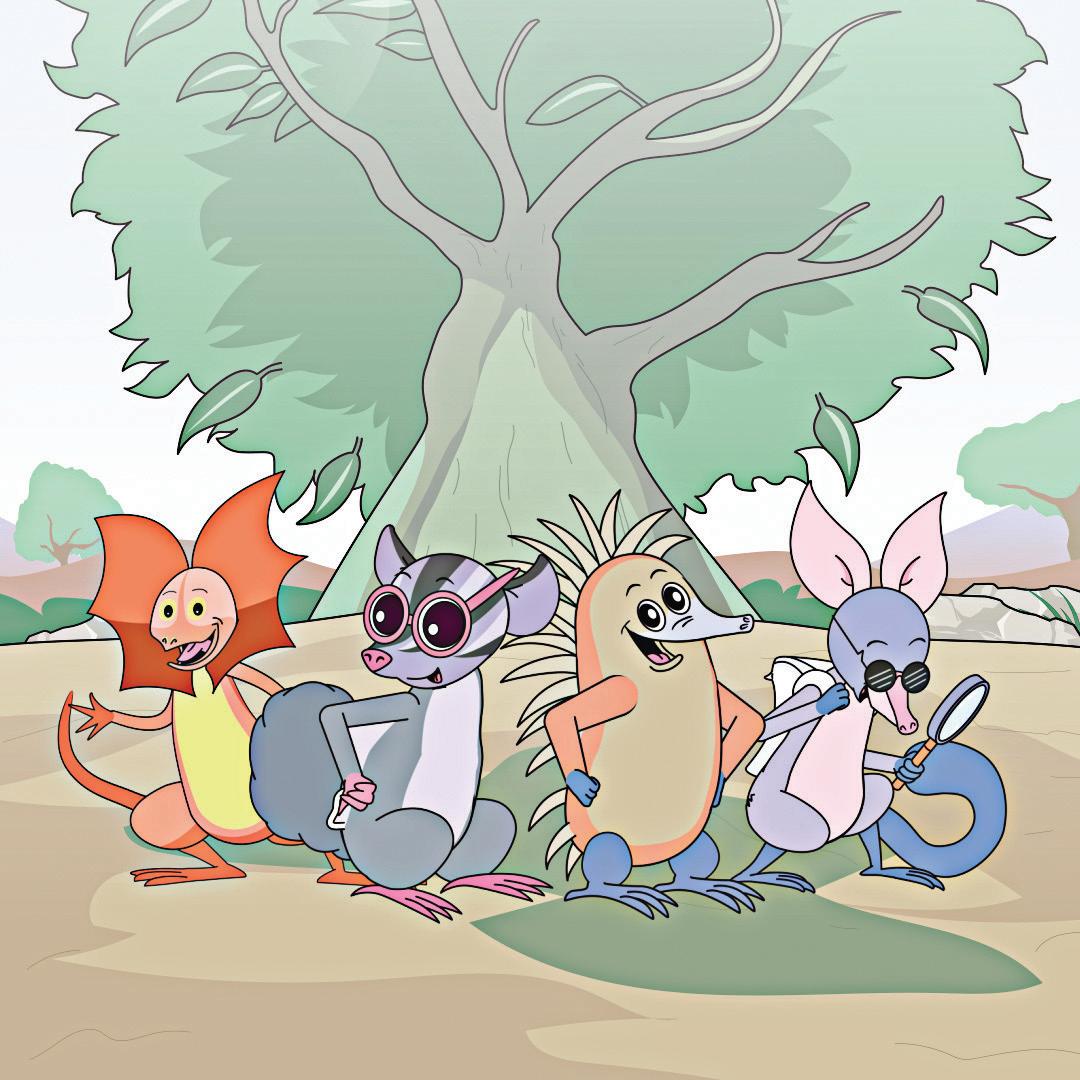
Foundation to Year 3 includes teacher notes to guide the conversation in the classroom.
Resources are also available to help parents and carers continue the conversations at home.
FREE PROFESSIONAL LEARNING MODULES
teachers. The modules created with Early Childhood Australia cover essential topics, including safe technology use, respectful online behaviour, resilience, and help-seeking, and critical thinking. Based on recent research, the modules include practical teaching strategies and classroom activities and align with Australian Institute for Teaching and School Leadership (AITSL) standards and the Australian Curriculum.
Levelling up your online safety knowledge with each of these modules only takes 25 minutes, with additional reading time (35 minutes) of self-study – all of which you can work through at your own pace.
CHECK OUT THE NEW RESOURCES
It’s important we work together to create a safer, more responsible online community for everyone. Check out the suite of materials on offer and start building young children’s capability today.

• Classroom resources: esafety.gov.au/lower-primary-resources
• Professional learning modules:
47
Meet the Mighty Heroes – Dusty, River, Wanda, and Billie – on a mission to deliver the eSafety Commissioner’s four key online safety messages to children aged 5-8 years in the classroom.
The eSafety Commissioner’s research reveals that 81 percent of parents with children aged 2 to 5 report their child is using the internet.
Fewer rules can improve outcomes for disengaged students
CEO OF EDMUND RICE EDUCATION AUSTRALIA’S FLEXIBLE SCHOOLS, DR MATT HAWKINS, EXPLAINS HOW A SUPPORTIVE AND TRAUMA-INFORMED LEARNING ENVIRONMENT CAN BETTER SERVE STUDENTS WHO HAVE EXPERIENCED COMPLEX EDUCATIONAL, SOCIAL OR PSYCHOLOGICAL SITUATIONS WHICH DEMAND UNIQUE RESPONSES

“If you’re a child today from a poor family, or from the bush, or you’re an Indigenous child, then you’re three times more likely to fall behind at school. We must turn this around.”
These are the words we heard recently from Federal Education Minister Jason Clare. In response to the release of the OECD’s Education Policy Outlook in Australia, Minister Clare indicated that the report signalled the need for significant educational reform, particularly with respect to equity, funding, and teacher workforce challenges.
While the report highlights many strengths that exist in our education system, it is clear significant challenges remain. Like many educators, the Minister believes our education system can be “better and fairer”.
Edmund Rice Education Australia (EREA) Flexible Schools Ltd is the largest independent national provider of flexible schooling, catering to some of our country’s most vulnerable and marginalised young people.
SUPPORTING DIVERSE LEARNERS
EREA’s 23 Flexible Schools offer an alternate education to young people who have become disenfranchised from a more traditional, mainstream approach to schooling. Many of those young people have experienced trauma, neglect, abuse and significant family dysfunction. Significant numbers of our students have social-emotional disabilities,
and many display challenging behaviours and struggle with self-regulation. We also have large proportions of First Nations young people, as well as a growing number of LGBTQIA+ young people.
Our students’ previous schooling experiences have often been defined by failure, shame and exclusion. Our model and approach is vastly different. Rather, our schools are characterised by radical inclusion, empathy, hope, fun and opportunity.
FEWER RULES, MORE VALUES
To describe the way that we work with young people, we use the language of ‘Common Ground and Operation by Principles.’ We utilise a counter approach to the traditional ‘power over’ model of schooling where adults possess all the control, and young people are expected to simply follow the rules. EREA Flexi Schools do not have nor enforce school rules. Instead, adults and young people operate together on the four principles of: Honesty, Participation, Respect, and Safe and Legal.
Our students have a great deal of choice, agency, and voice in what and how they learn, all within the parameters of a national curriculum and state and territory legislation and regulation. We solve problems collaboratively, and our young people are allowed to make lots of mistakes. Exclusion is rarely, if ever, an option.
alongside young people on common ground, and people supporting each other to operate within our four principles.
We do not seek to argue that our model is the silver bullet required to meet all current educational challenges, nor do we attest that every young person who walks through our gates is suddenly gifted with a bright future free from trauma, abuse or neglect. However, since our first school opened in Logan in the 1980s, our approach has had a great deal of success for a growing cohort of young people left behind and left out of our education system.
We are committed to continuing to work with government and other partners to keep providing an alternate educational approach for some of our country’s most vulnerable young people. EM
48 education matters primary
THE LAST WORD // Edmund Rice Education Australia
Unlocking education potential by harnessing AI
WHEN CHATGPT WAS RELEASED TO THE PUBLIC LAST YEAR, IT UNLEASHED A WAVE OF EXCITEMENT, FEAR, CURIOSITY AND DEBATE. CEO OF EDUCATION SERVICES AUSTRALIA ANDREW SMITH DISCUSSES THE IMPACT OF AI-ENABLED TECHNOLOGIES ON TEACHING AND LEARNING.

As Australia’s national education technology company, the team at Education Services Australia have been following these developments closely, connecting with colleagues in Australia and across the globe, to help us better understand the technology, the arc of its development, and what this could mean for Australian classrooms.
The global education technology industry has an estimated value of over $300 billion and one billion potential consumers. An industry with this profile will attract interest and investment, and although much of it will be driven by values that align to those of our education system, this is not always the case. Driven by diverse motives, existing and emerging education technology developers will turn to generative AI models as a means of increasing their market share.
In the interests of our students, Australia needs to take a strong policy position on shaping the design, use and governance of AI in our schools. Australia’s education ministers have taken an important first step on the path to harnessing AI-enabled education technology products through the establishment of a national taskforce to provide advice on the development of an evidence-informed, best practice frameworks for Australian schools to guide the use of generative AI tools.
Presently, ESA’s work is coalescing around three key themes: Make it safe, make it fair and make it work.
MAKE IT SAFE
‘Make it safe,’ is focused on responsible and ethical approaches to the design and use of AIenabled edtech that benefit students, schools and families. Ethical risks arising from the inherent bias contained within the datasets used to train AI models, the generation of misinformation that appears credible, and the creation of content that undermines individual autonomy can have serious consequences for our students and society.
Privacy risks associated with collection and use of sensitive personal information without consent, the misuse and monetisation of student data, and increased risk of data breaches – all put the privacy and safety of young people at risk. Establishing frameworks and governance arrangements that ensure AI-enabled edtech products comply with Australian Privacy Principles and information security standards, ensure transparency and are accountable is critical to minimising potential harm.
MAKE IT FAIR
As E D Hirsch once noted: “The internet is not an equal opportunity fact finder, it rewards those in the know.” The advantages enjoyed by those already ‘in the know’ are amplified by AI-enabled edtech and presents a risk of digital divide. If we allow the usage of these emerging learning technologies to be concentrated in more advantaged schools, we will see existing equity gaps widen. This is why governments and agencies have a responsibility to ensure that
educational settings.
MAKE IT WORK
From a solid foundation of safe and equitable design and use, we can collectively harness the opportunities these technologies present for positively impacting the learning trajectory of students and reducing the workload of teachers.
Co-design with educators, learning design grounded in evidence and ongoing research into what works should be the minimum standard for any education technology product that enters our classrooms. Supporting our teachers with effective and accessible professional learning that respects their expertise and supports them to integrate these technologies into their teaching practice is essential.
AI-enabled education technology can become a powerful tool in creating a more equitable and effective education system that benefits students and teachers. However, the risks associated with the misuse of data, perpetuating biases and undermining the role of educators, cannot be ignored.
Everyone in education has a role to play in establishing frameworks and practices that will allow our students and teachers to thrive in an AI-enabled world. EM
49 education matters primary
Education Services Australia // THE LAST WORD
ACARA introduces new professional development site for teachers
It is hard to believe that it has been over a year now since the Australian Curriculum Version 9.0 was endorsed by education ministers and the new curriculum website published. Since that time, the focus of ACARA’s hard-working curriculum team has turned to supporting the implementation of the Version 9.0 curriculum.
As state and territory jurisdictions are implementing the Version 9.0 curriculum in different ways, it is imperative that ACARA’s team adopts a flexible approach in developing and publishing our new curriculum support resources. Teachers and educators need to access and use the resources in a way that suits their individual needs but will also work with the different jurisdictional timelines for implementation.
That’s why we have ensured that flexibility is the cornerstone of our Professional Learning Hub – a new professional learning resource for teachers, educators and schools which we launched at the end of April 2023.
This online portal hosts professional learning content that supports teachers in understanding and teaching the new Australian Curriculum. Our intention is to provide an indispensable, ongoing professional learning forum across the three dimensions of the new curriculum. It will help teachers and educators to build deep familiarity with the curriculum and support high-quality curriculum planning.
We believe it is important for us to avoid a ‘one-size-fits-all’ professional learning approach. That is why our Professional Learning Hub is
a self-directed learning tool that is designed to allow teachers and educators to undertake ongoing professional development at their own pace. Teachers can log into the Hub and choose the course most relevant for them as they make individual preparations for implementing the new curriculum.
Another key design consideration was helping teachers to understand the main changes in the curriculum, especially the new, refined and deleted content and the related changes in the achievement standards.
However, as the changes between the Version 8.4 and Version 9.0 curricula vary considerably between learning areas, we’ve taken a flexible approach to developing each individual module so that the changes in each specific learning area and their implications on the planning of teaching and learning activities and assessment practices are clearly explained.
The development and rollout of the Professional Learning Hub is being done in stages. The first set of courses provide an overview of how the Professional Learning Hub works, and a summary of the Australian Curriculum review process as well as the content and functionality of the Version 9.0 curriculum website. The second set of courses explain the more detailed changes to the content, content descriptions and achievement standards in the learning areas, general capabilities and cross-curriculum priorities. The future courses under development will offer detailed explanations of the relationships
between strands and sub-strands within the learning areas and the connections across the curriculum. They will also provide ideas to support the planning of teaching and learning activities and related assessments to progress learning.
As well as focusing on developing these new curriculum resources, work continues on the final stages of the Australian Curriculum Review: Languages. The public consultation period for Arabic, Hindi, Turkish and Vietnamese closed in April and we’re aiming to have these language curricula endorsed by education ministers in the middle of the year.
The final four languages and language frameworks – Chinese, Classical Languages Framework and Classical Greek and Latin, Auslan and Aboriginal and Torres Strait Islander Framework curricula – will be released for public consultation later in the year with the aim of having them endorsed and published in early 2024.
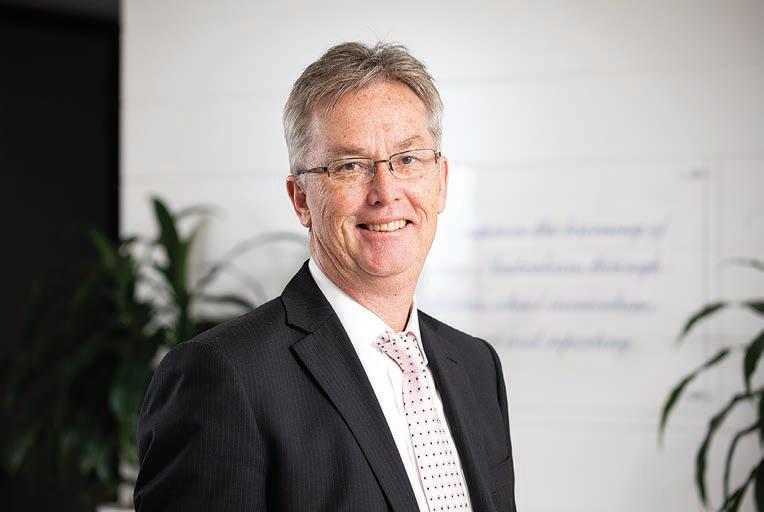
Once this review process is over, we will have the entire new Australian Curriculum available on the website. In the meantime, teachers and educators can sign up to the ACARA Professional learning hub at: www. learning.acara.edu.au EM
For more information, visit: www.acara.edu.au
50 education matters primary
ACARA CEO DAVID DE CARVALHO OUTLINES THE ROLLOUT OF LAUNCH PLANS FOR ACARA’S NEW ONLINE PROFESSIONAL LEARNING HUB THAT WILL SUPPORT TEACHERS AND SCHOOLS WITH IMPLEMENTING VERSION 9.0 OF THE NEW AUSTRALIAN CURRICULUM.
THE LAST WORD // ACARA


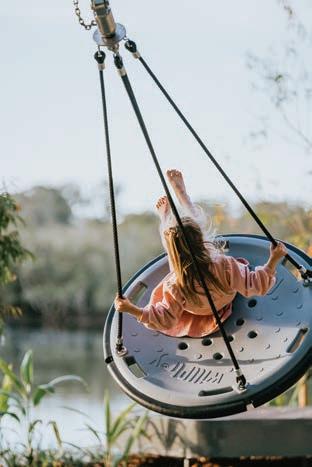
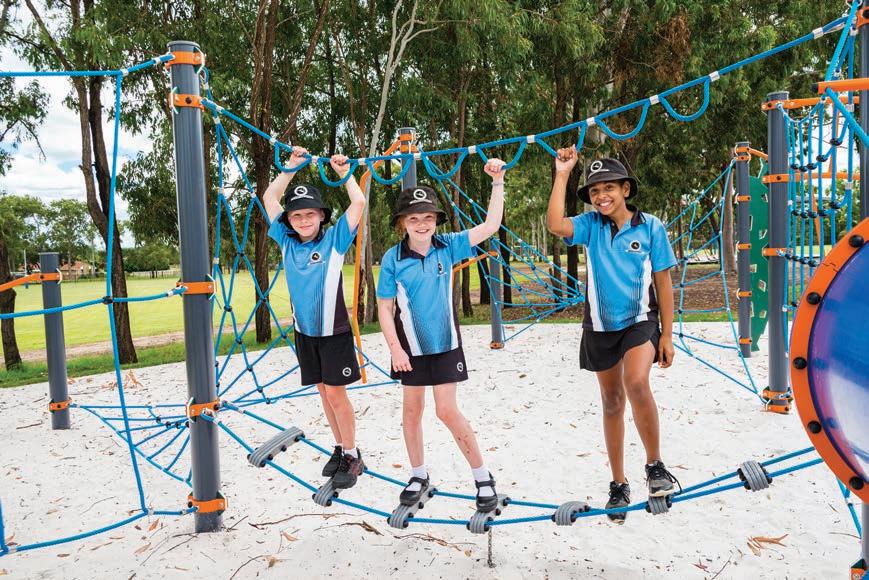


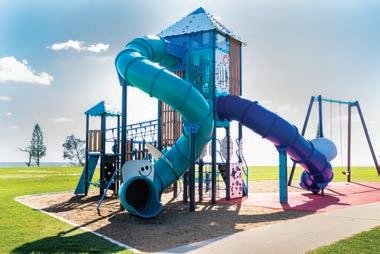












Designed by big people, for little treasures. . . www.willplay.com.auP. 1300 132 047info@willplay.com.au | OWNED DESIGNED
Foundation, Year 1 & Year 2
Digital tools & classroom activities


Teacher professional development
Expression of Interest

opens 14 August 2023
elsaschools.edu.au


a free STEM program for primary school in 2024
Join










































































































































 Monster Maker 1 and 2
Monster Maker 1 and 2


























































































